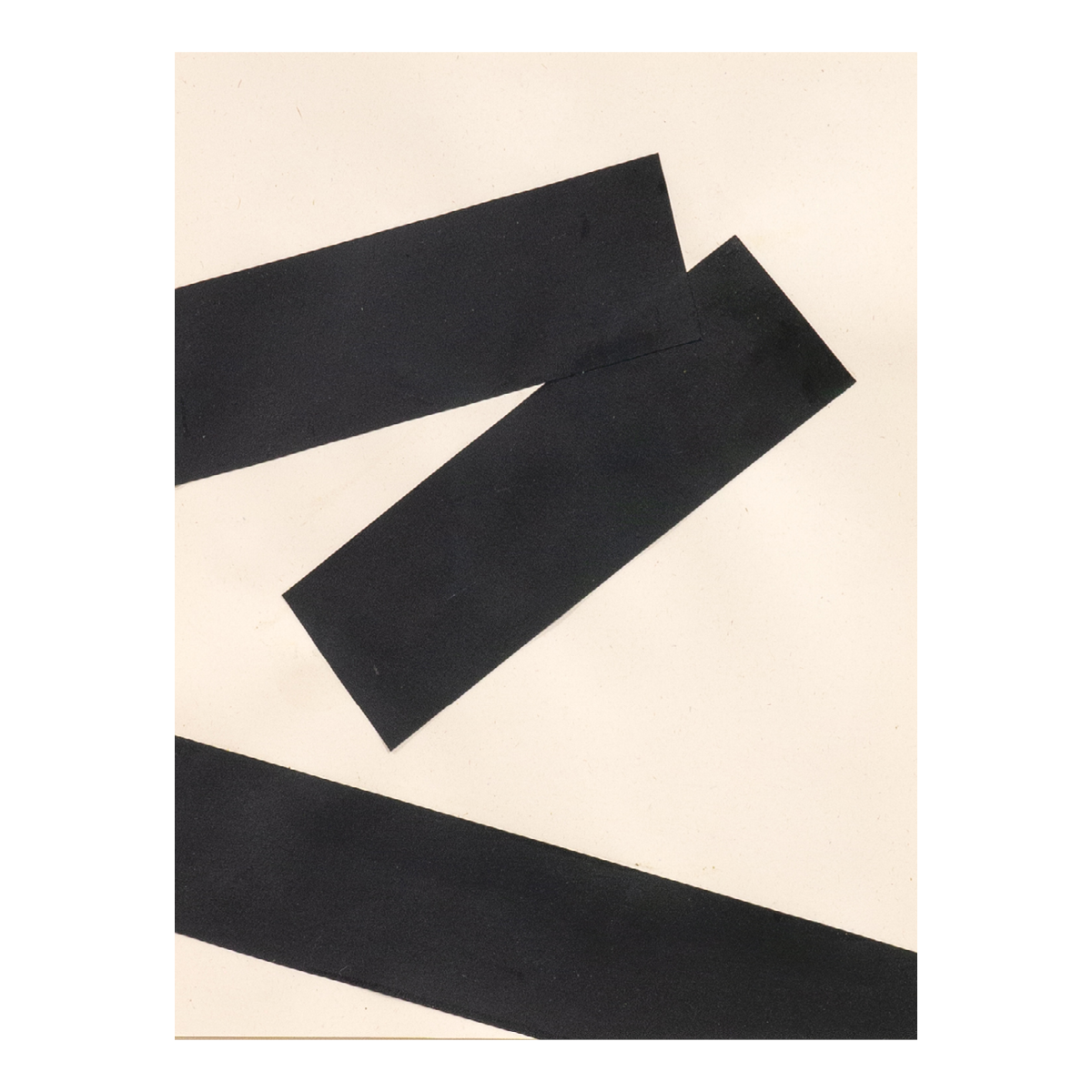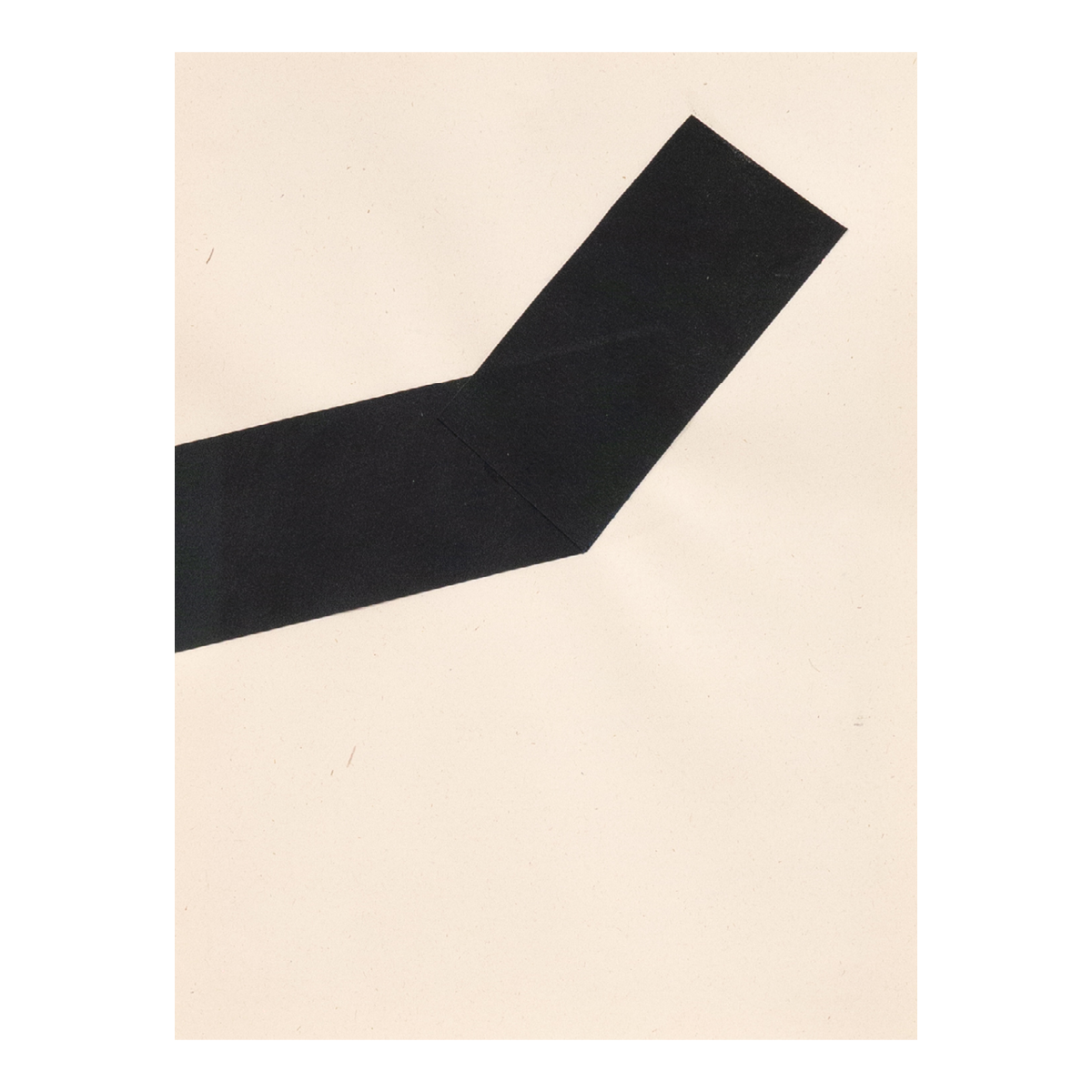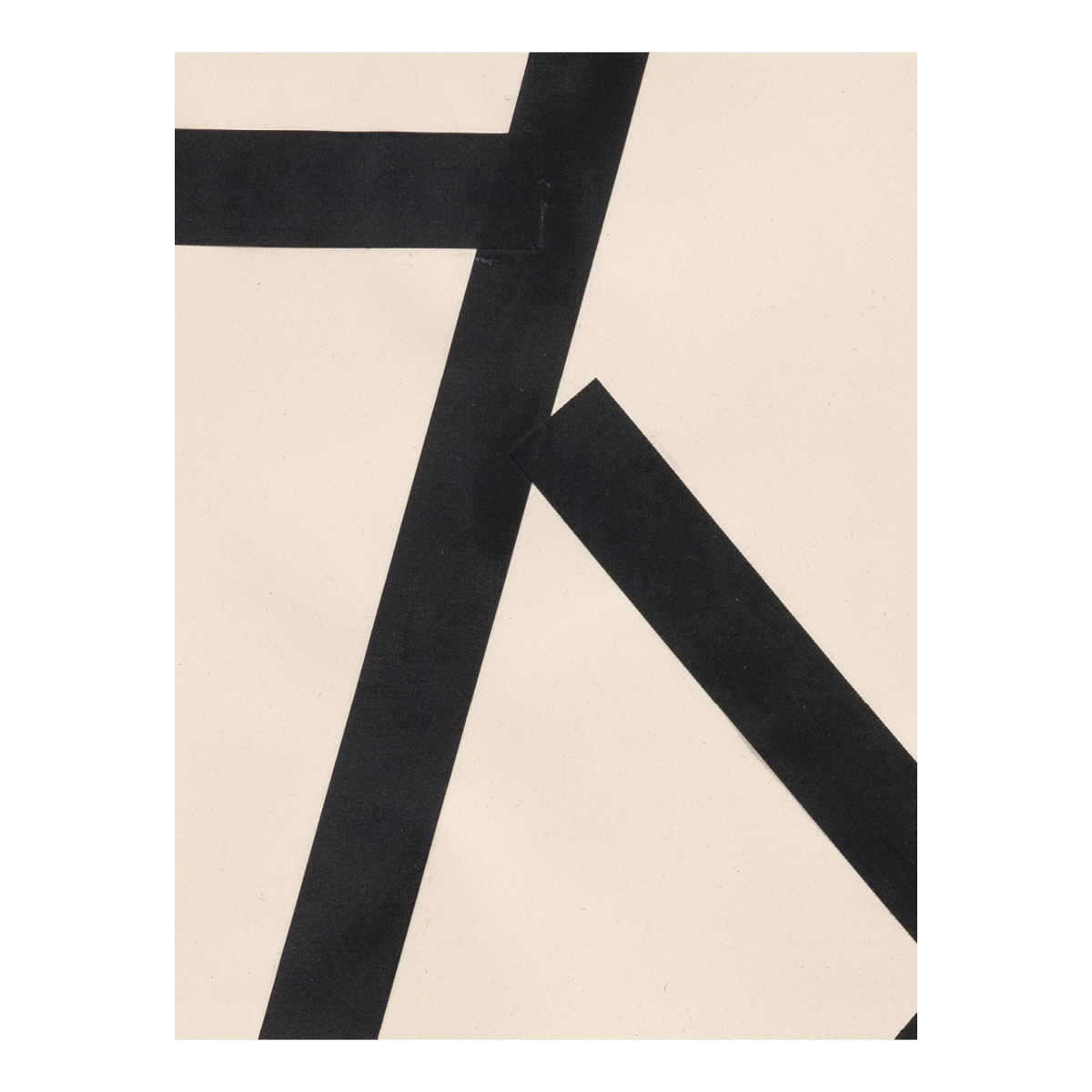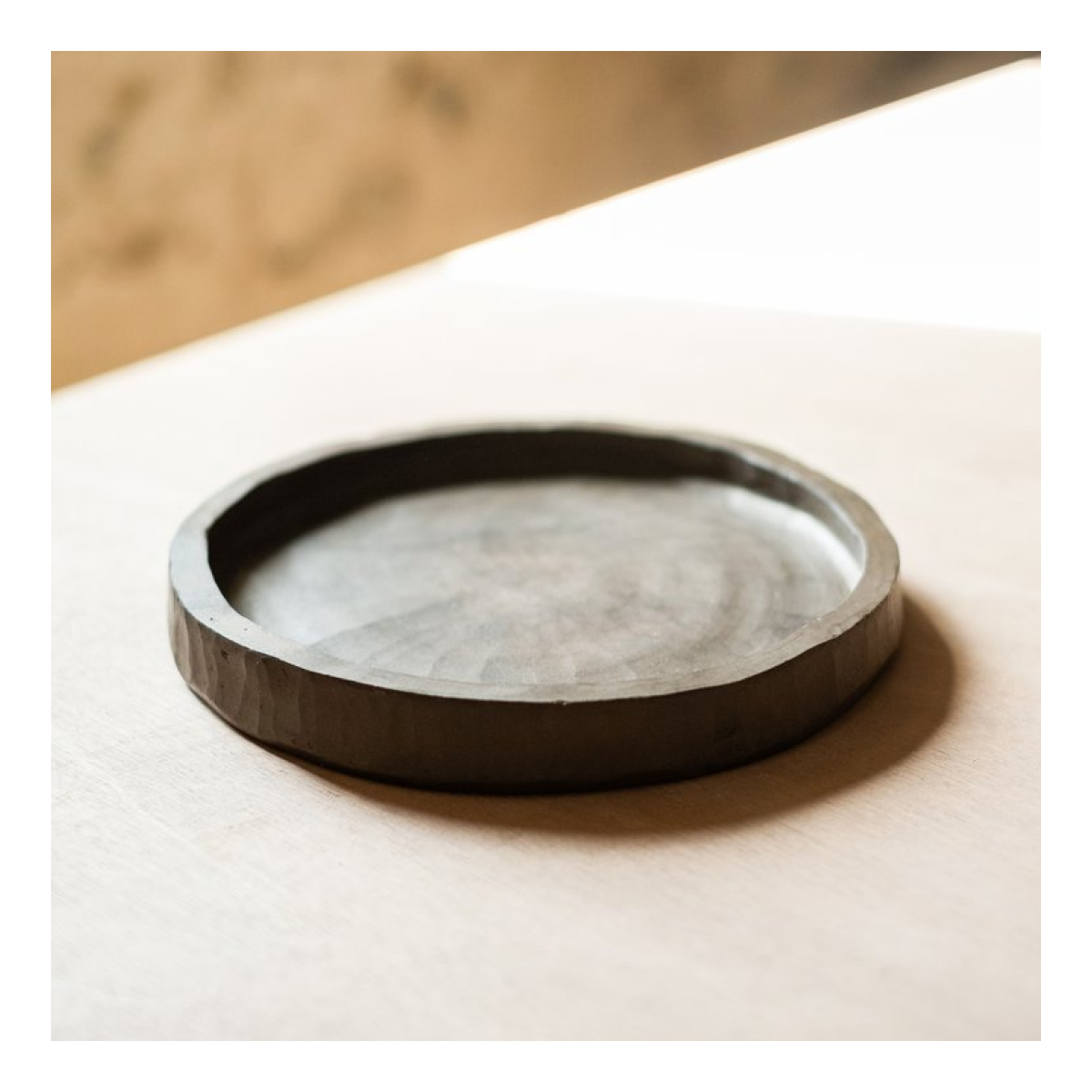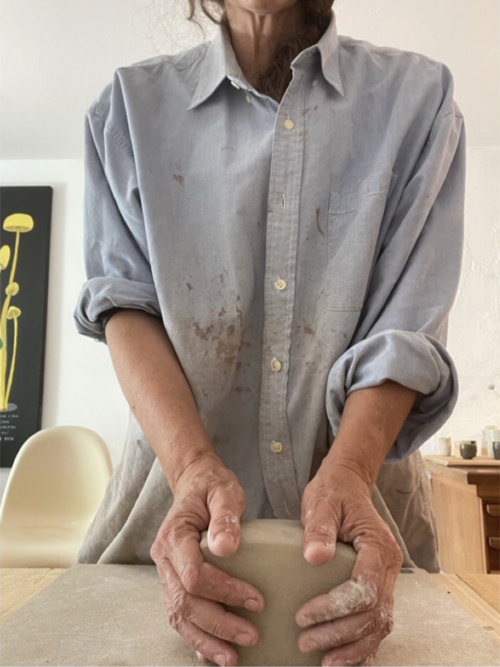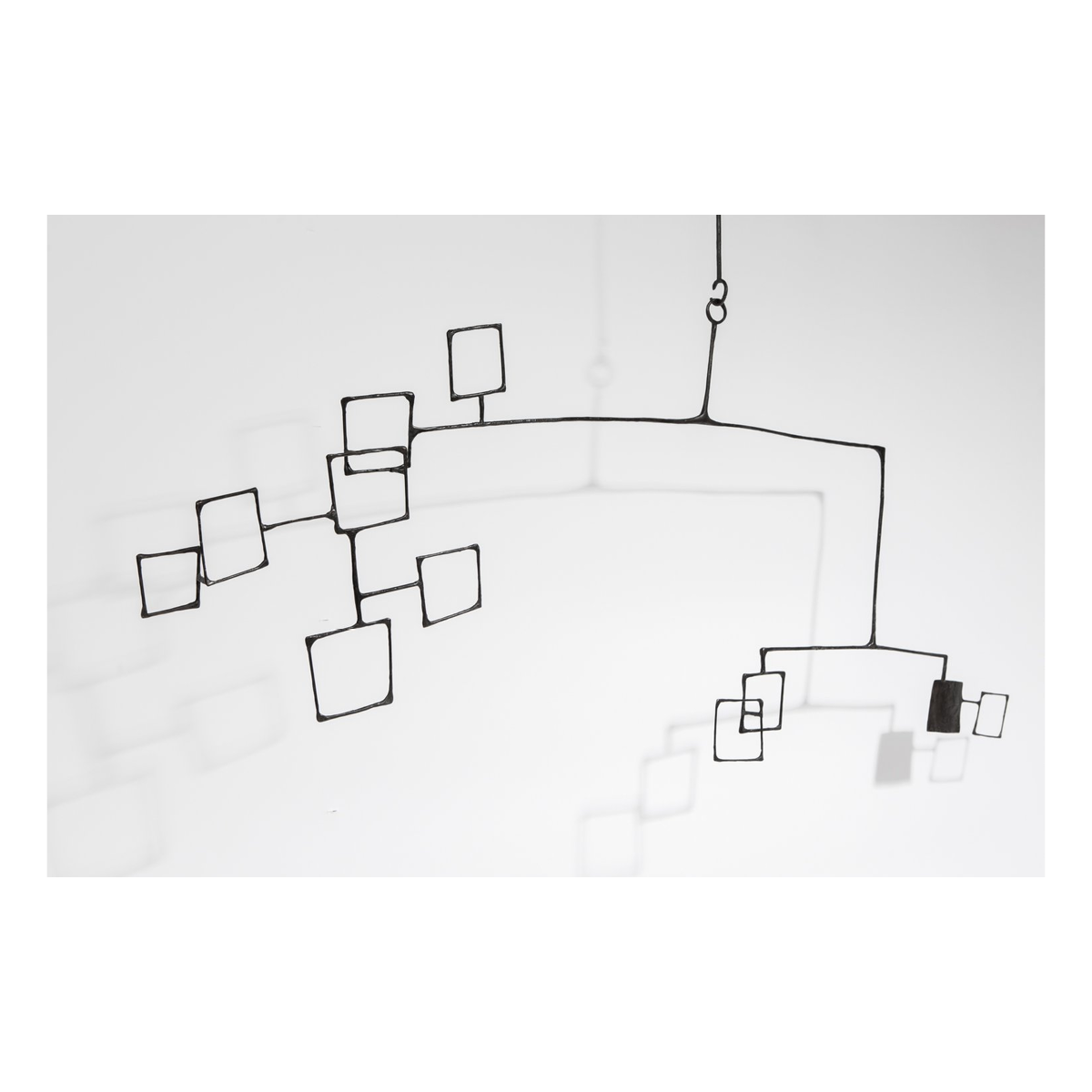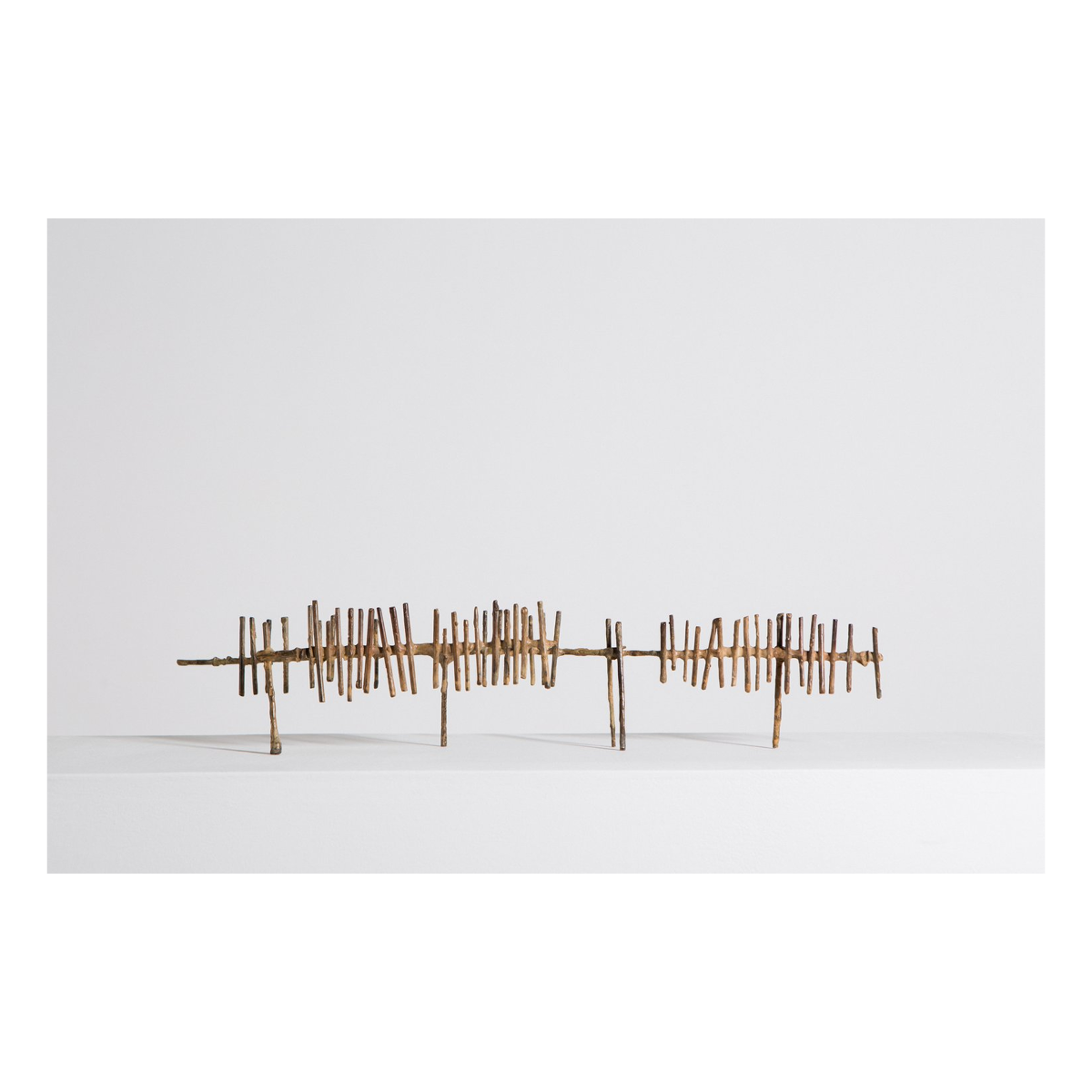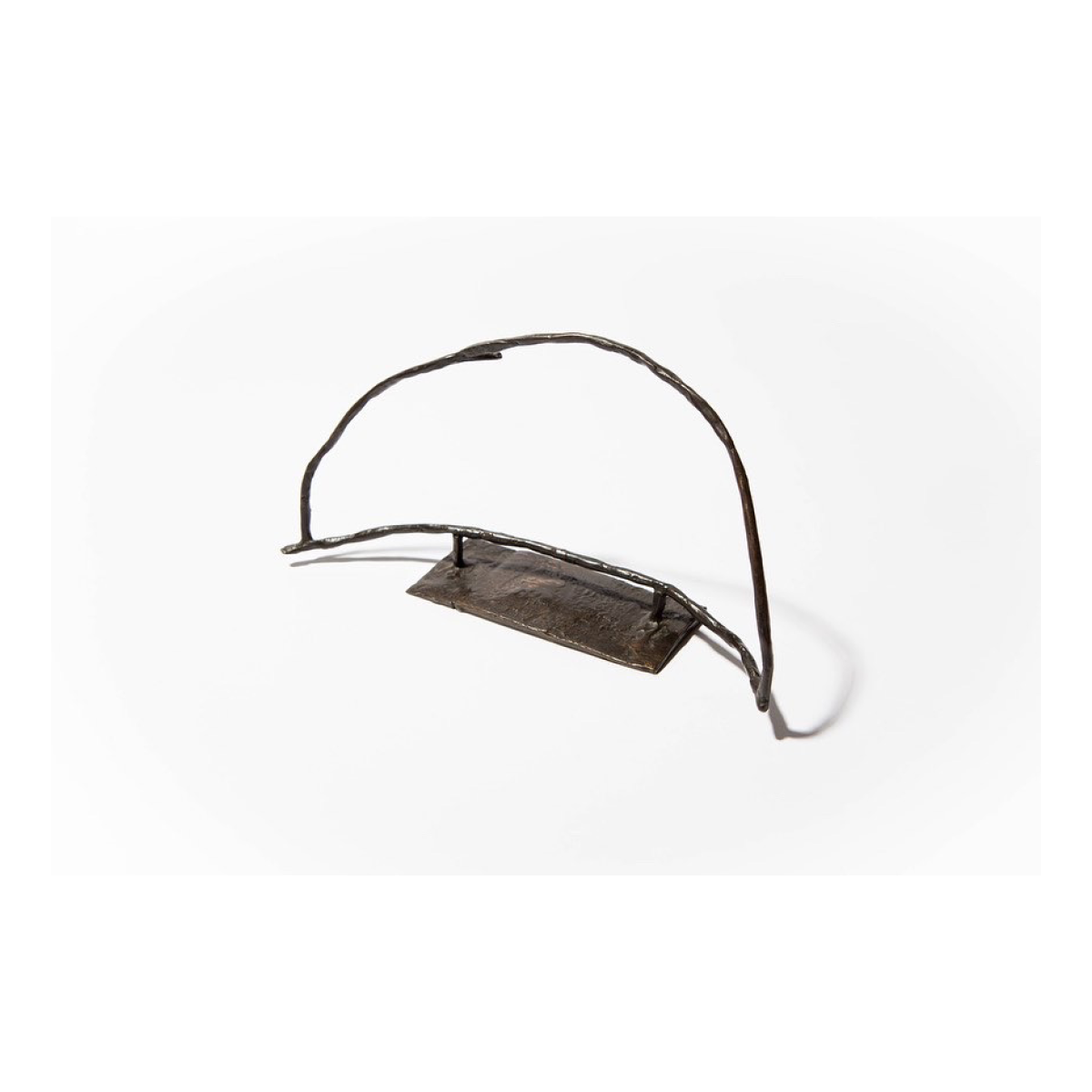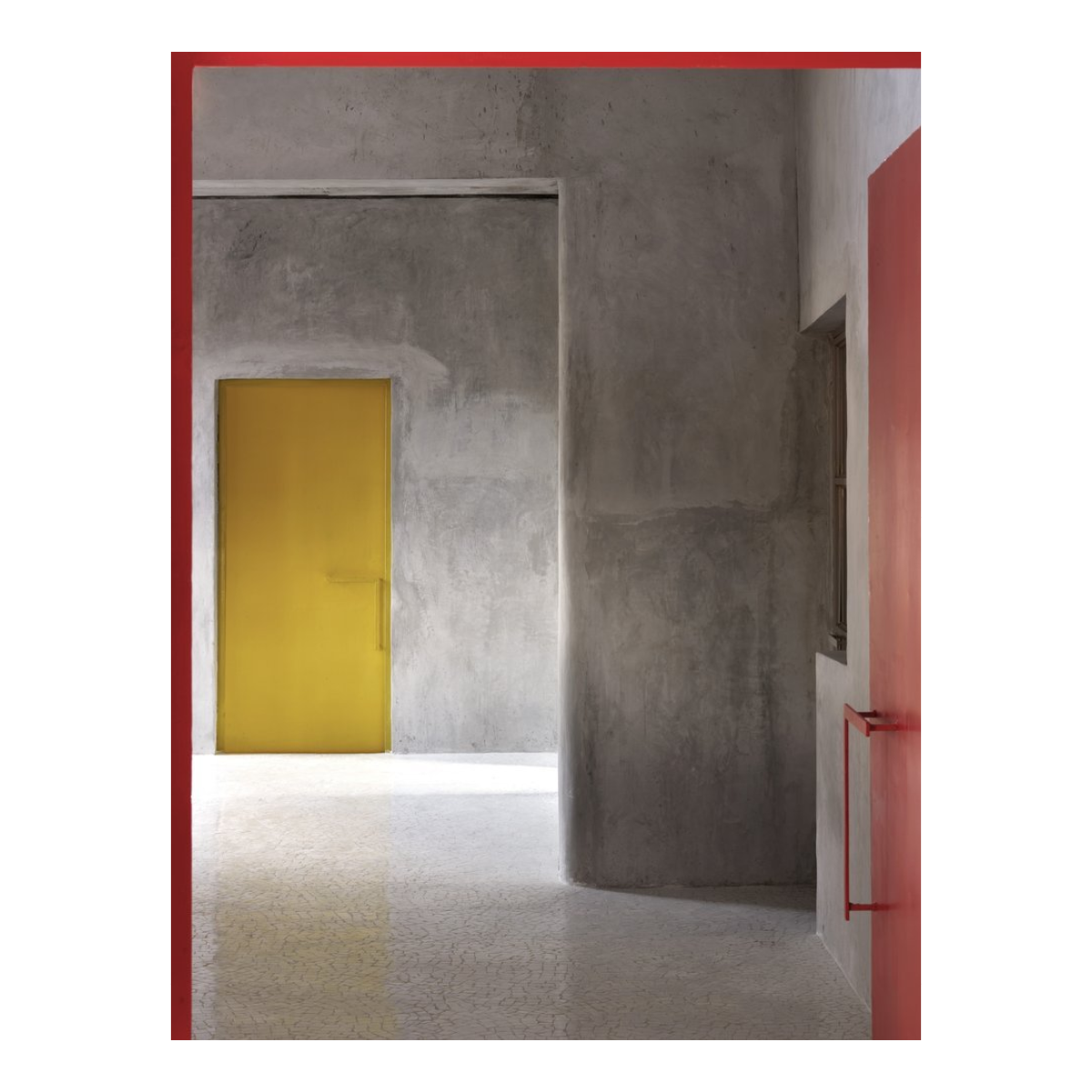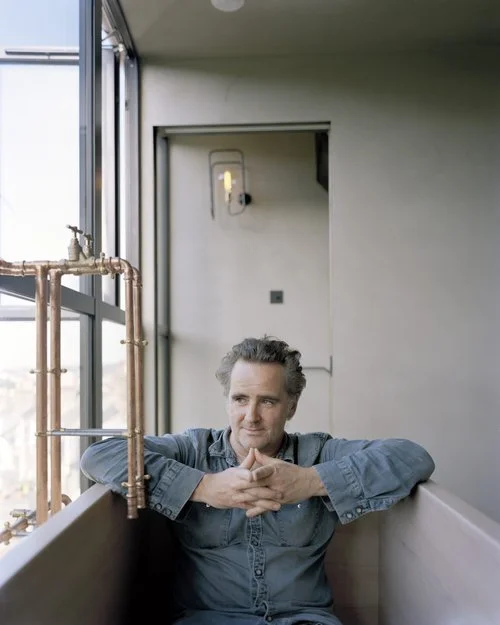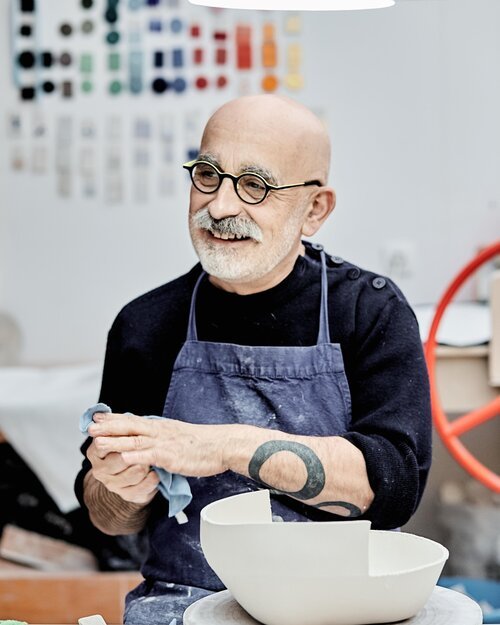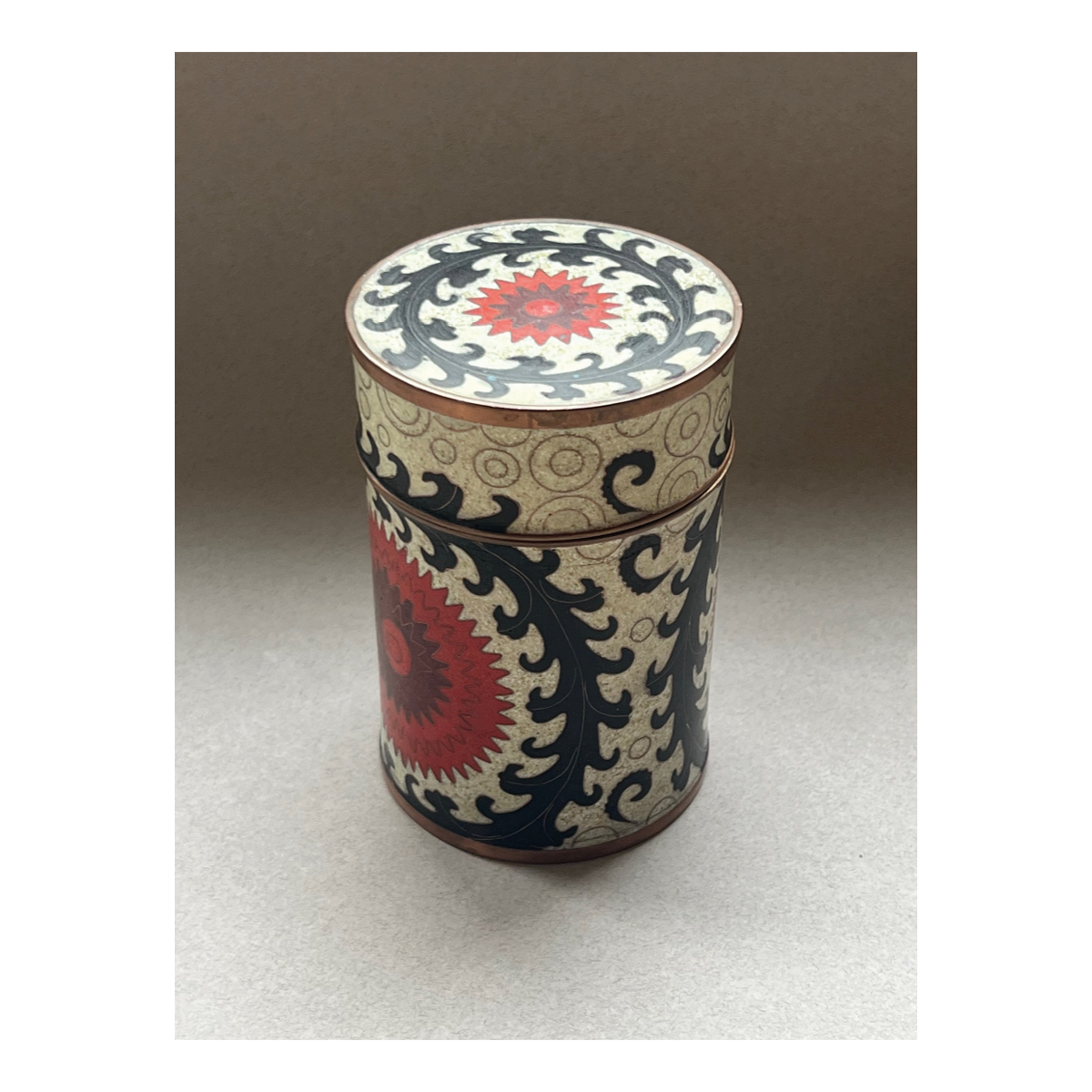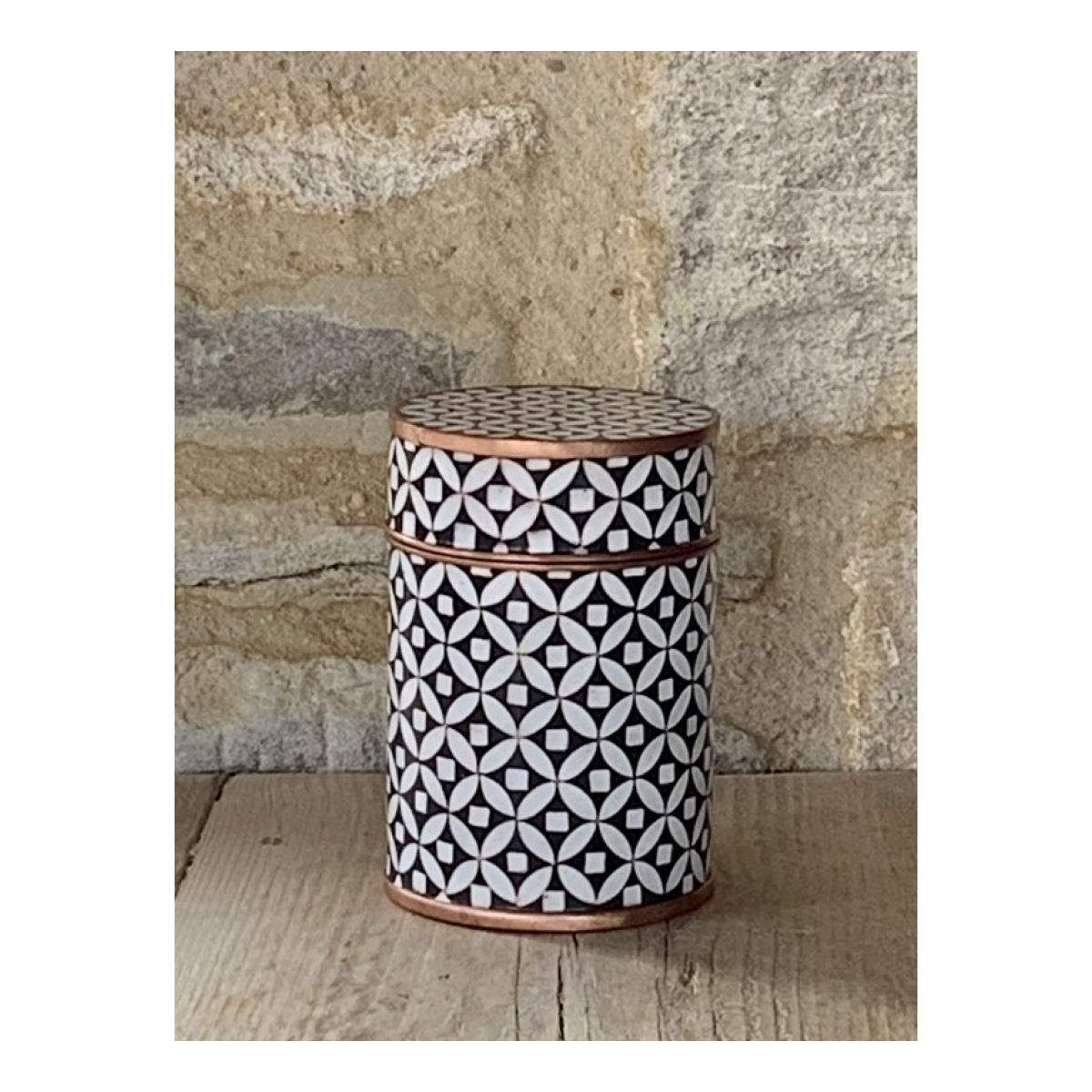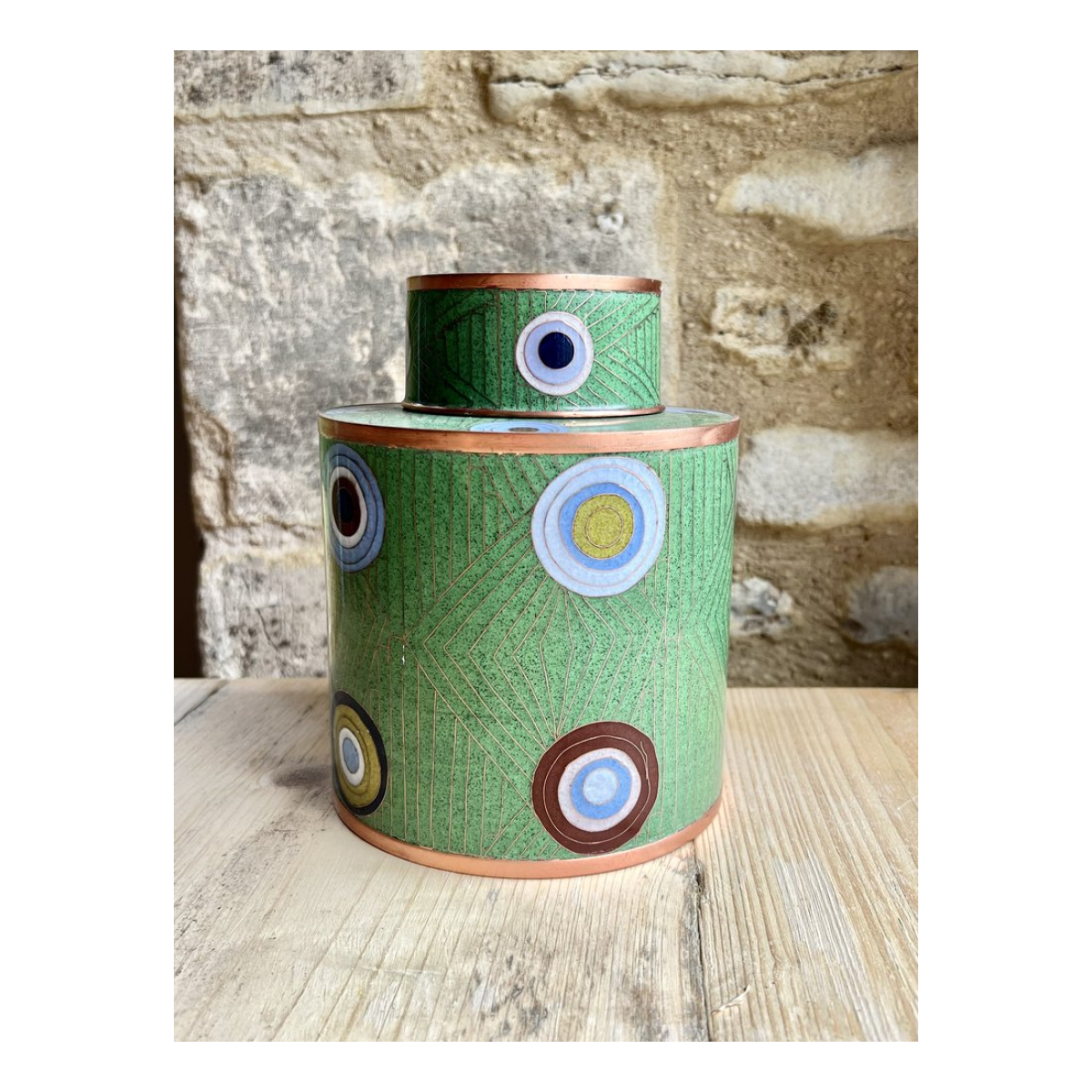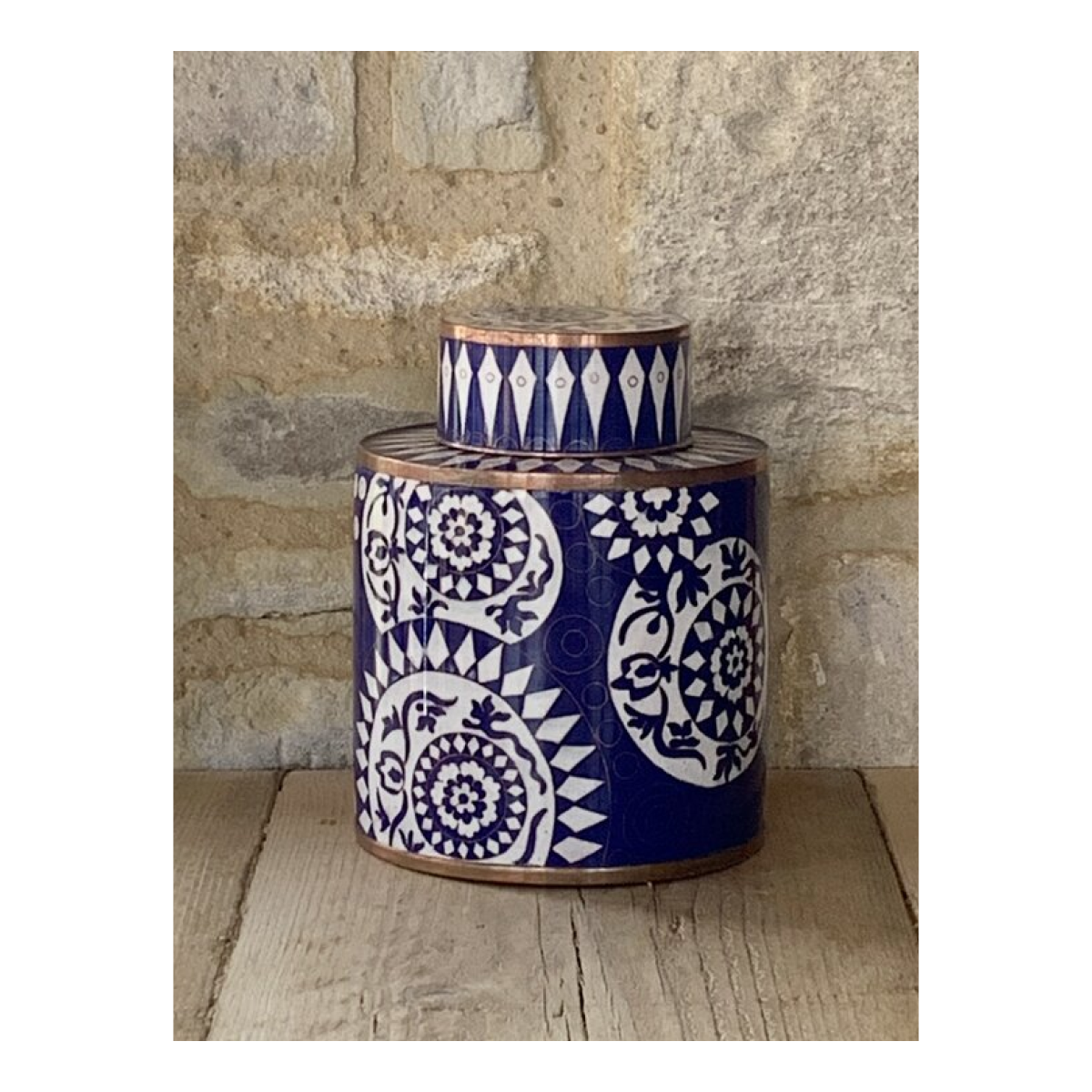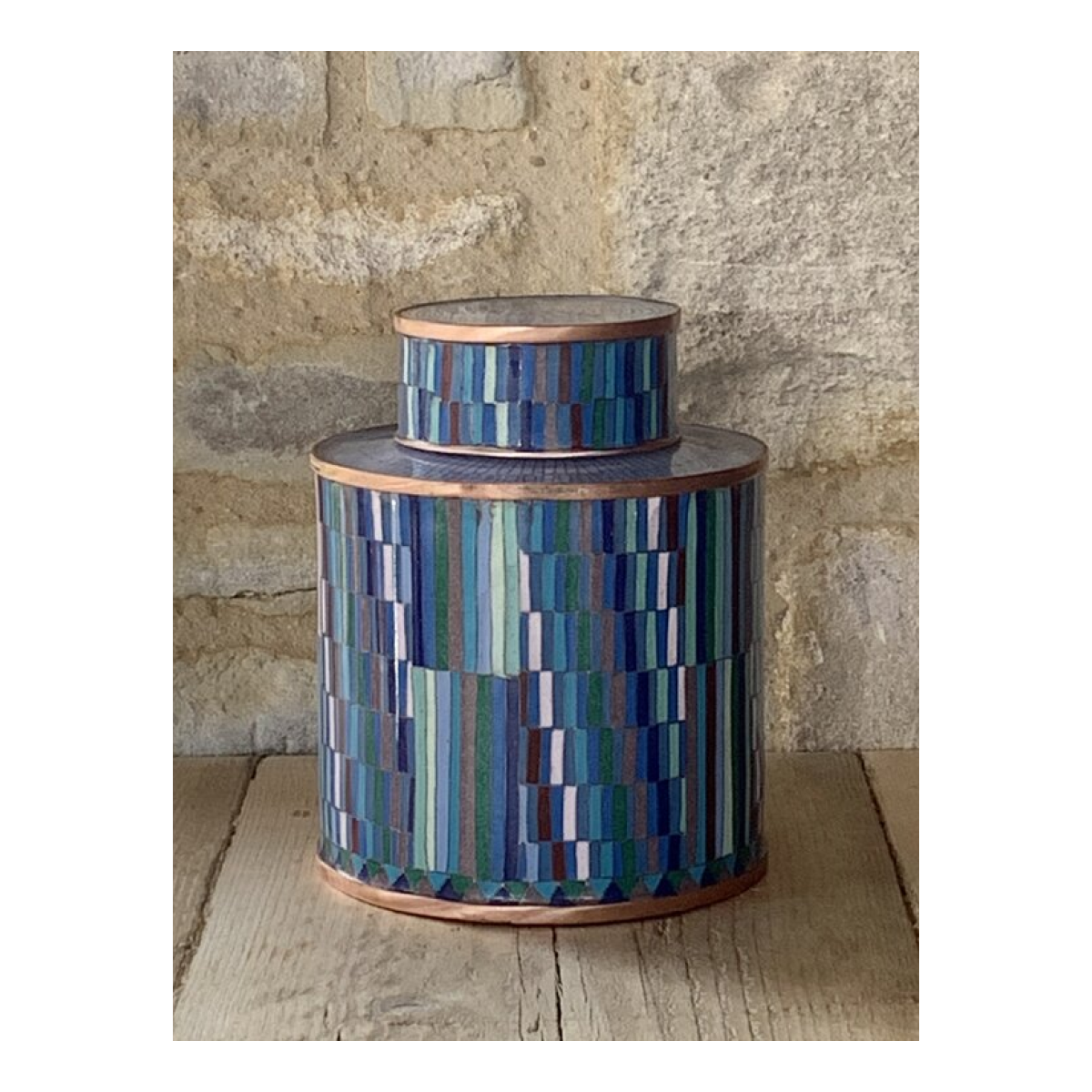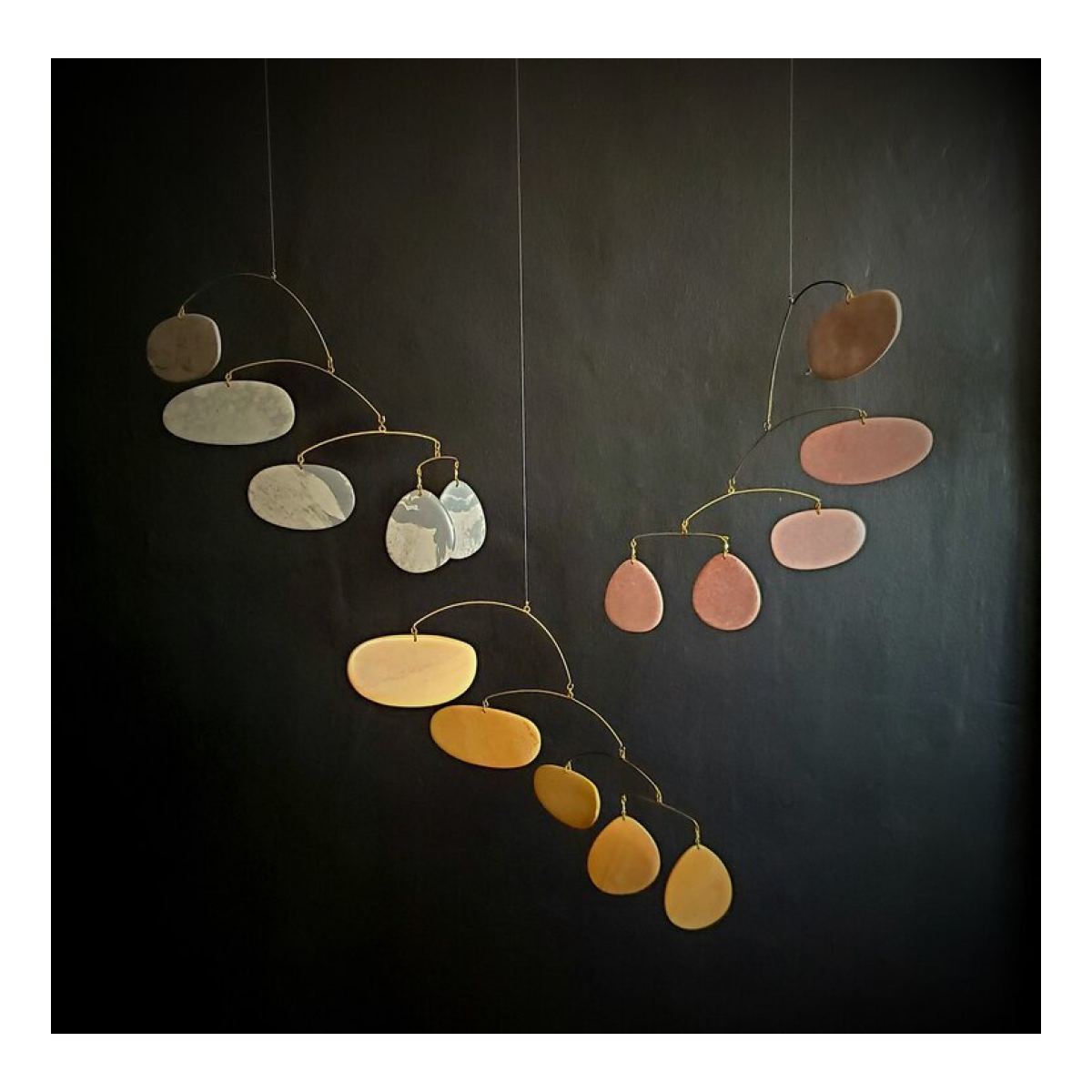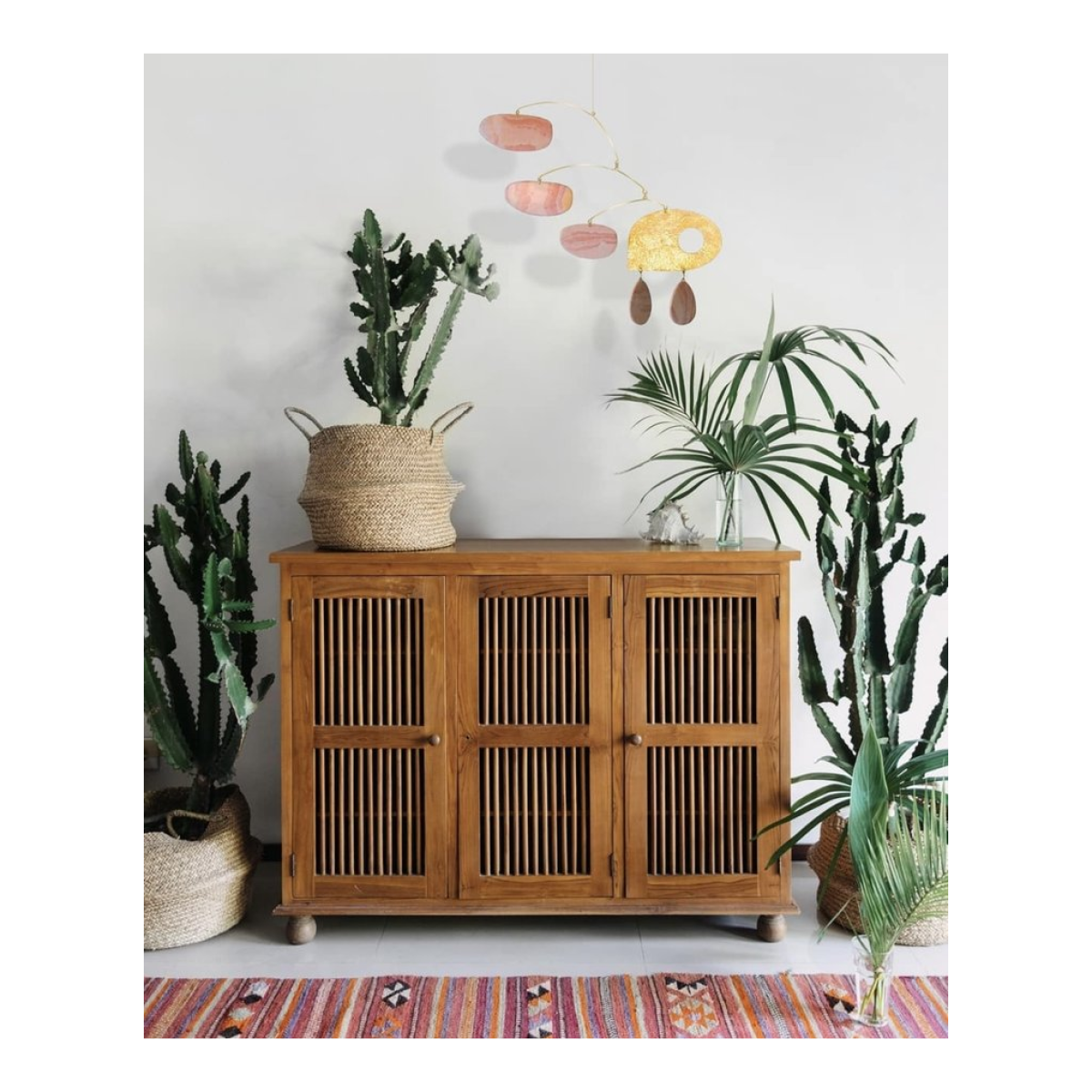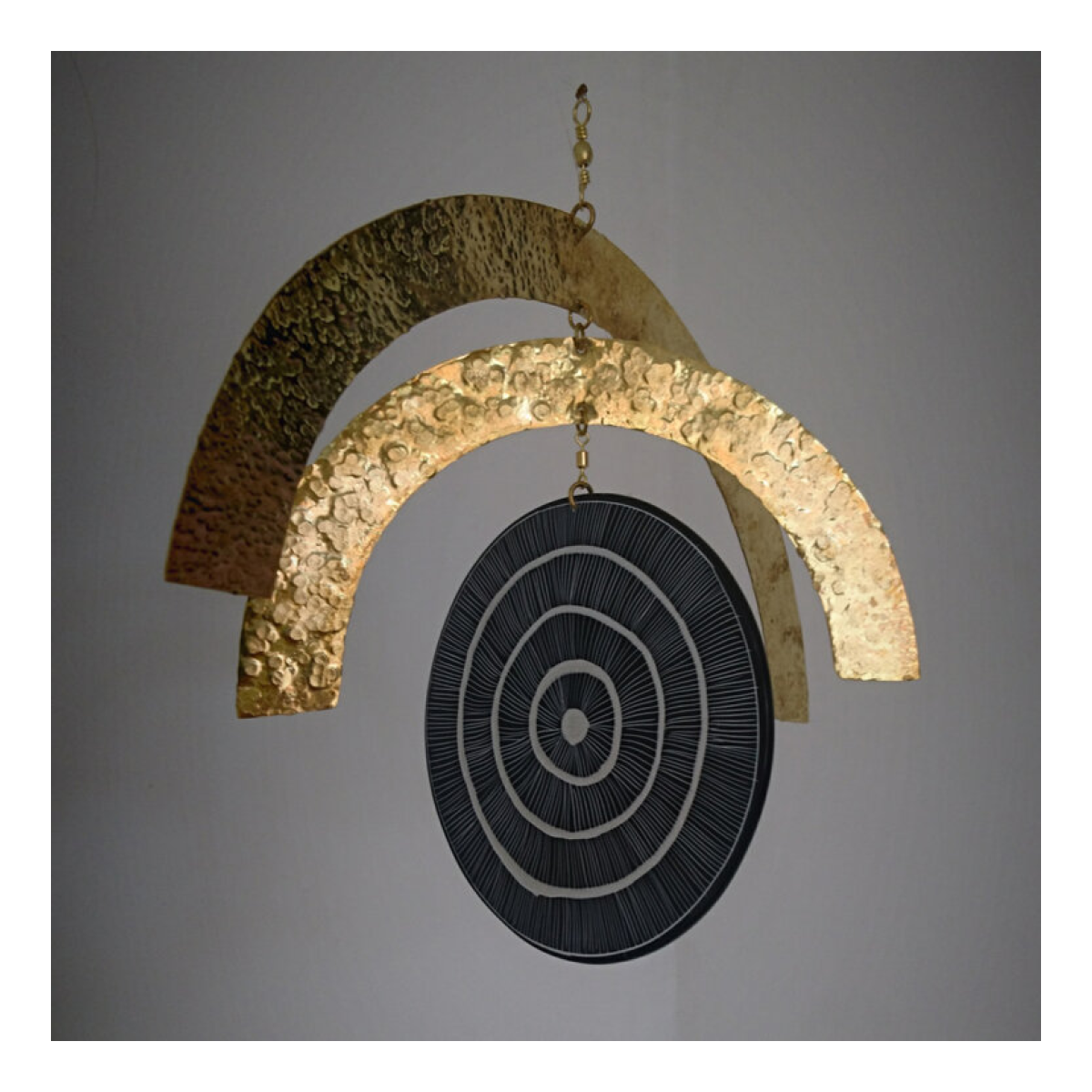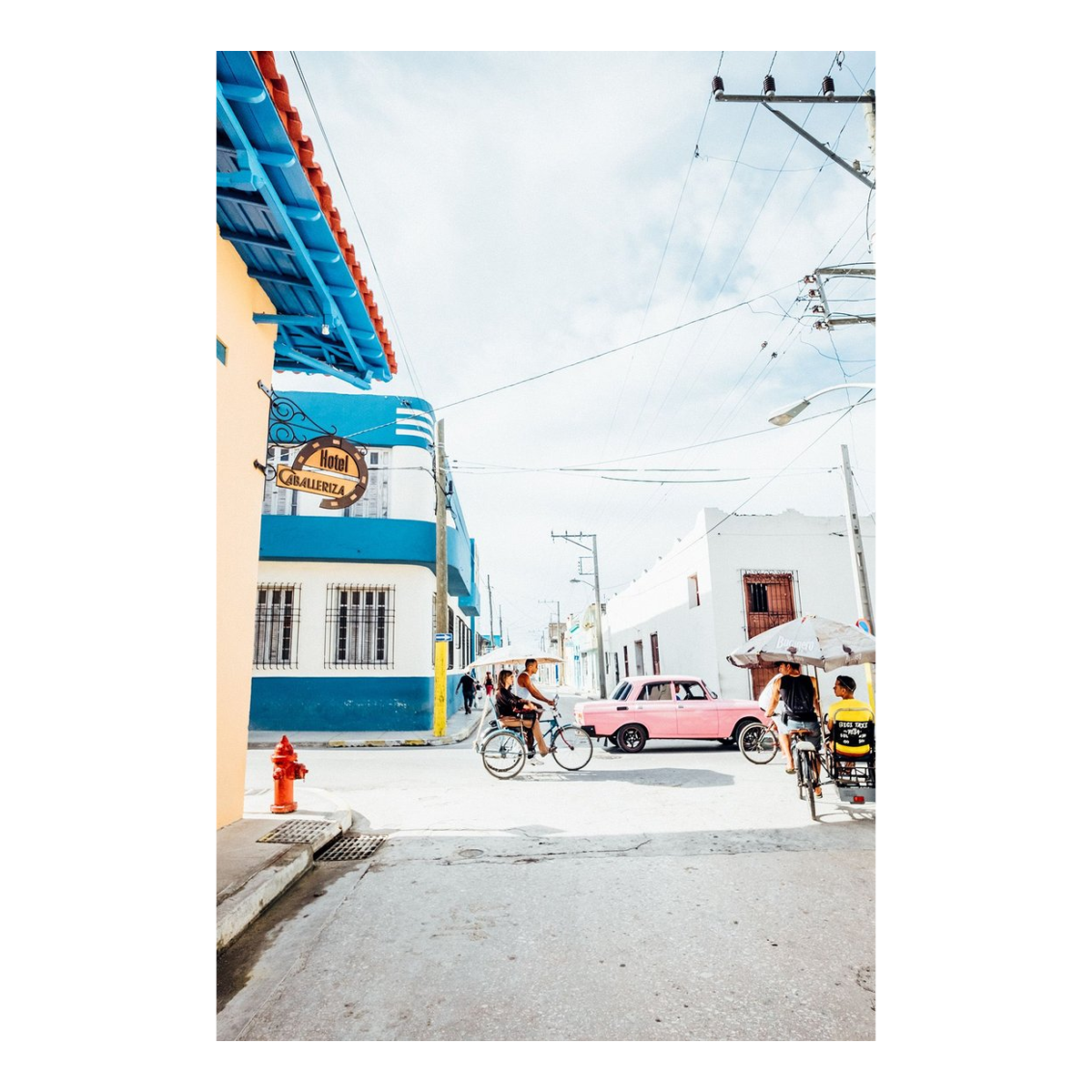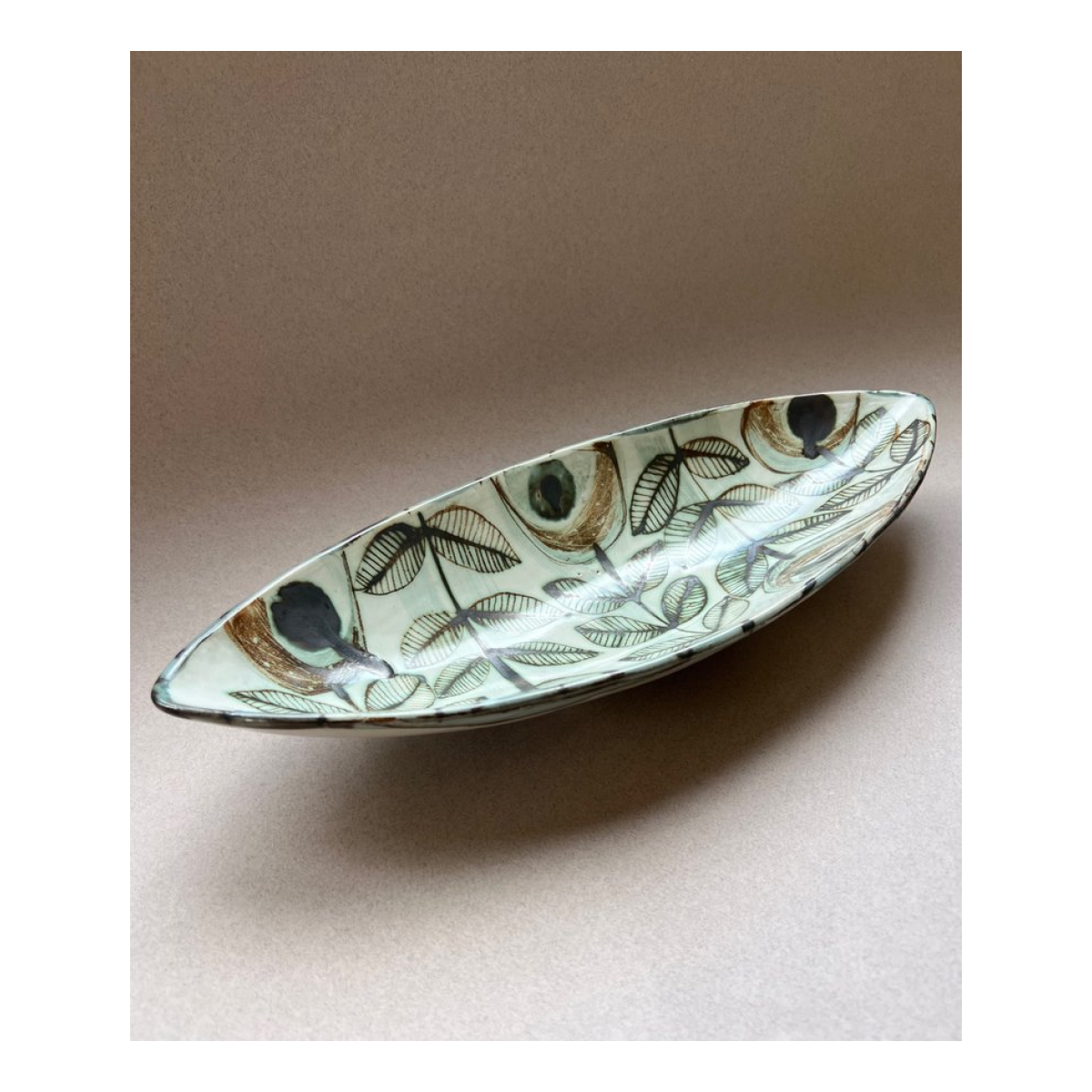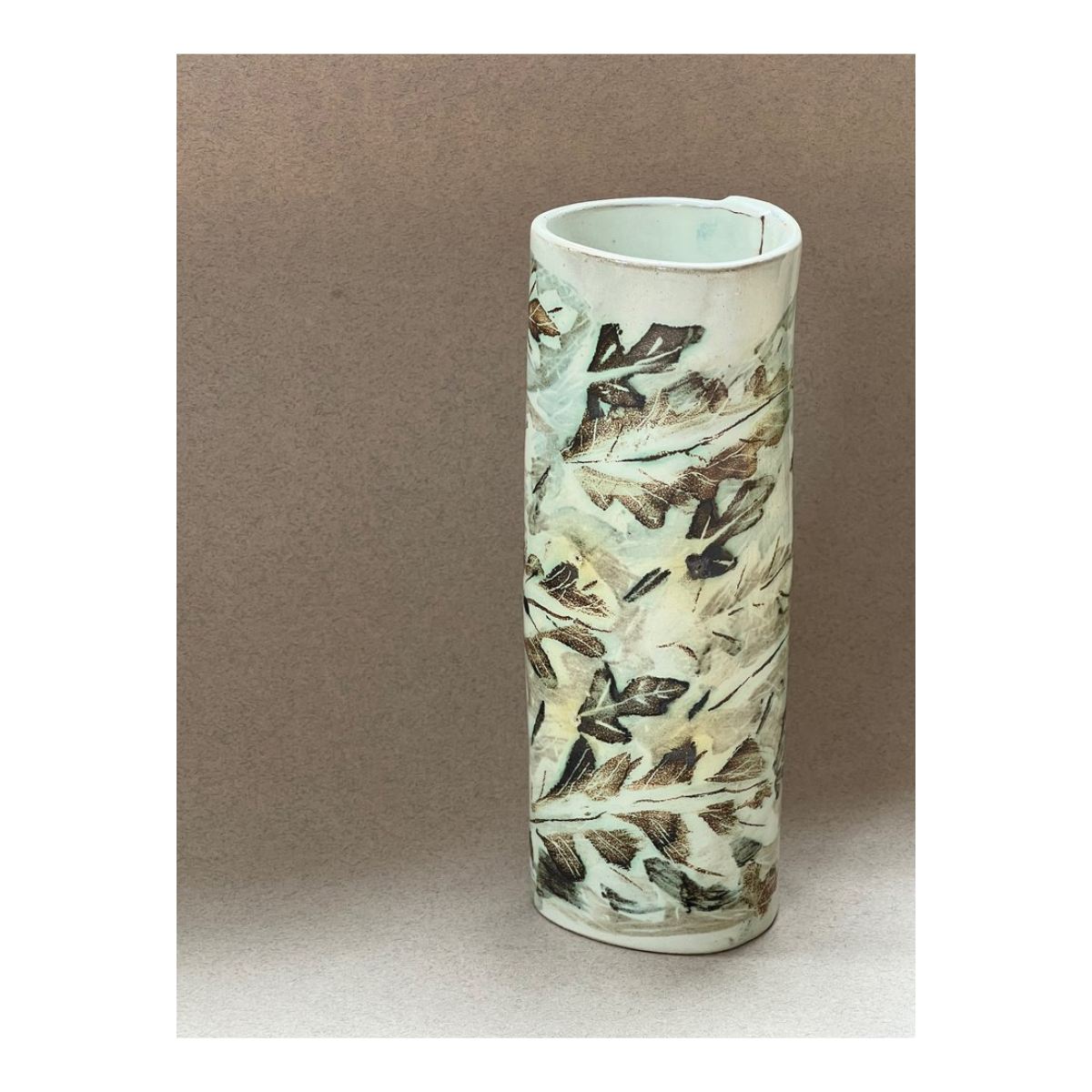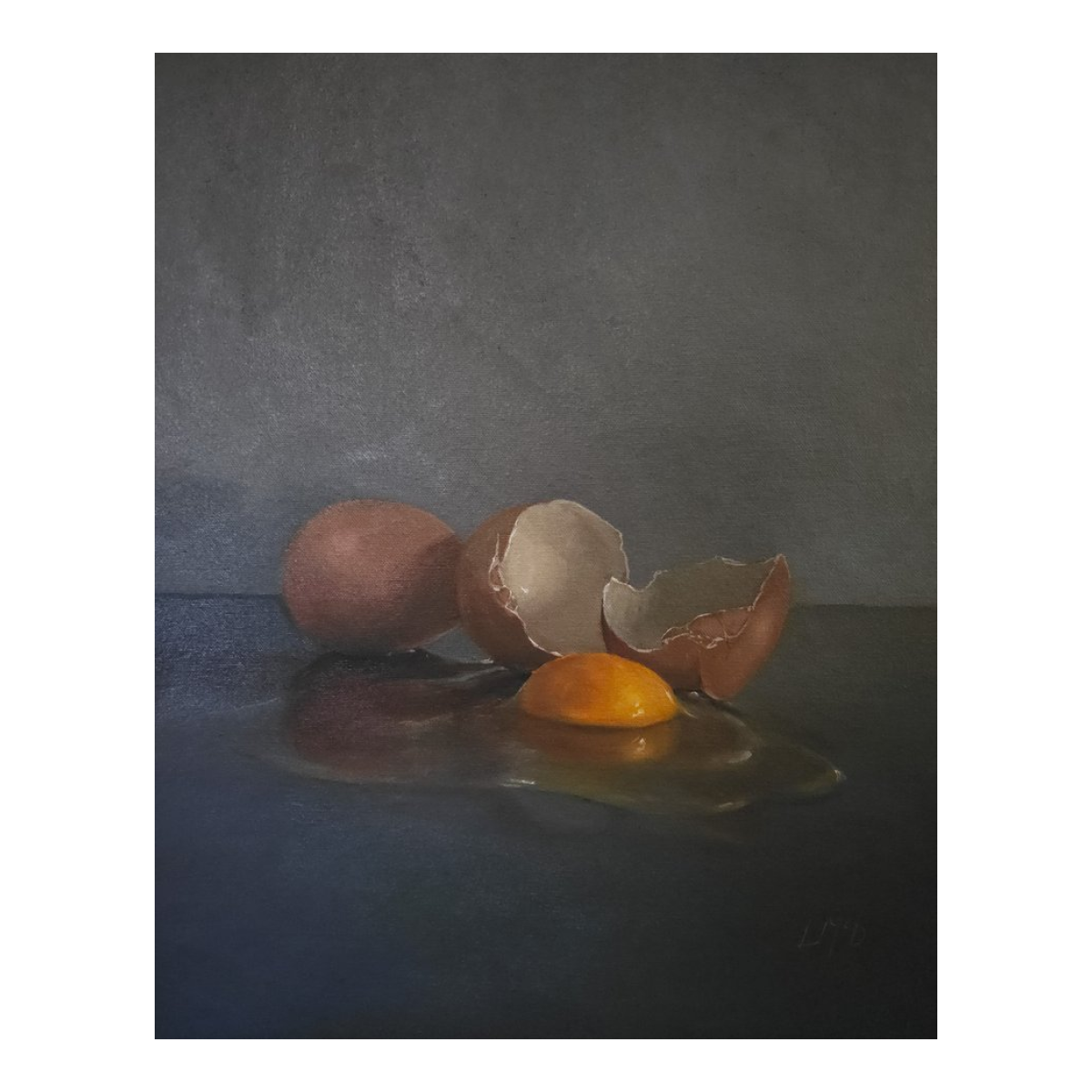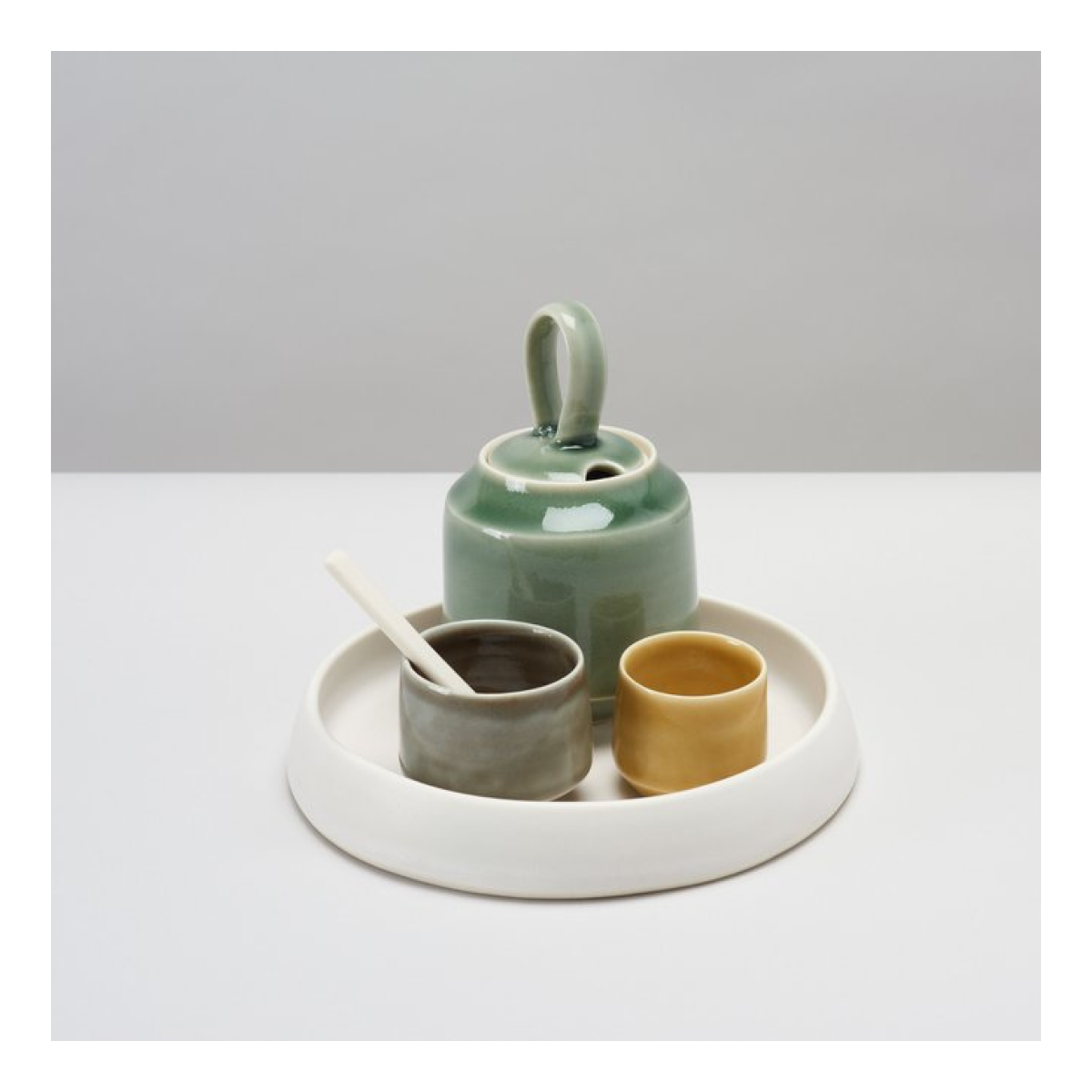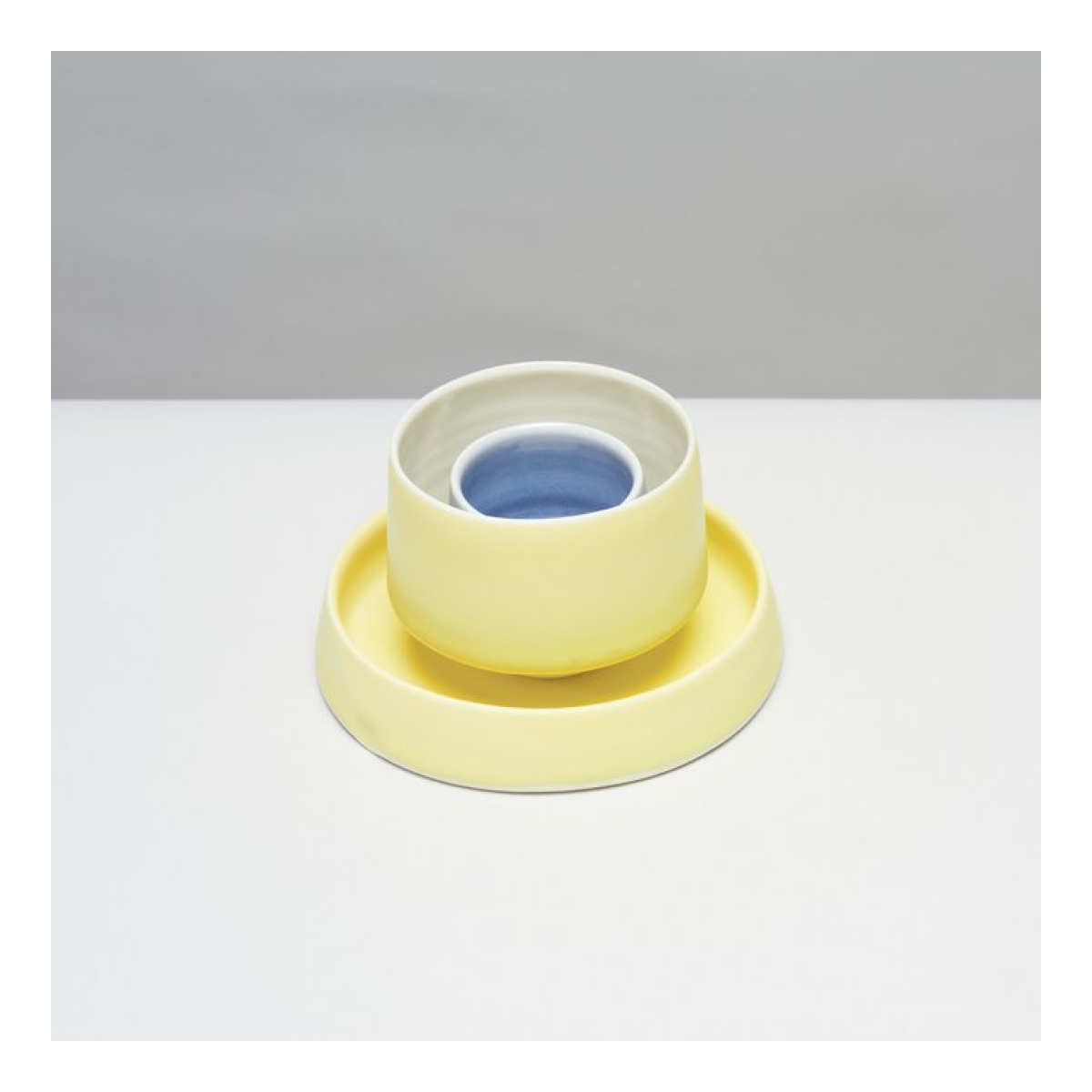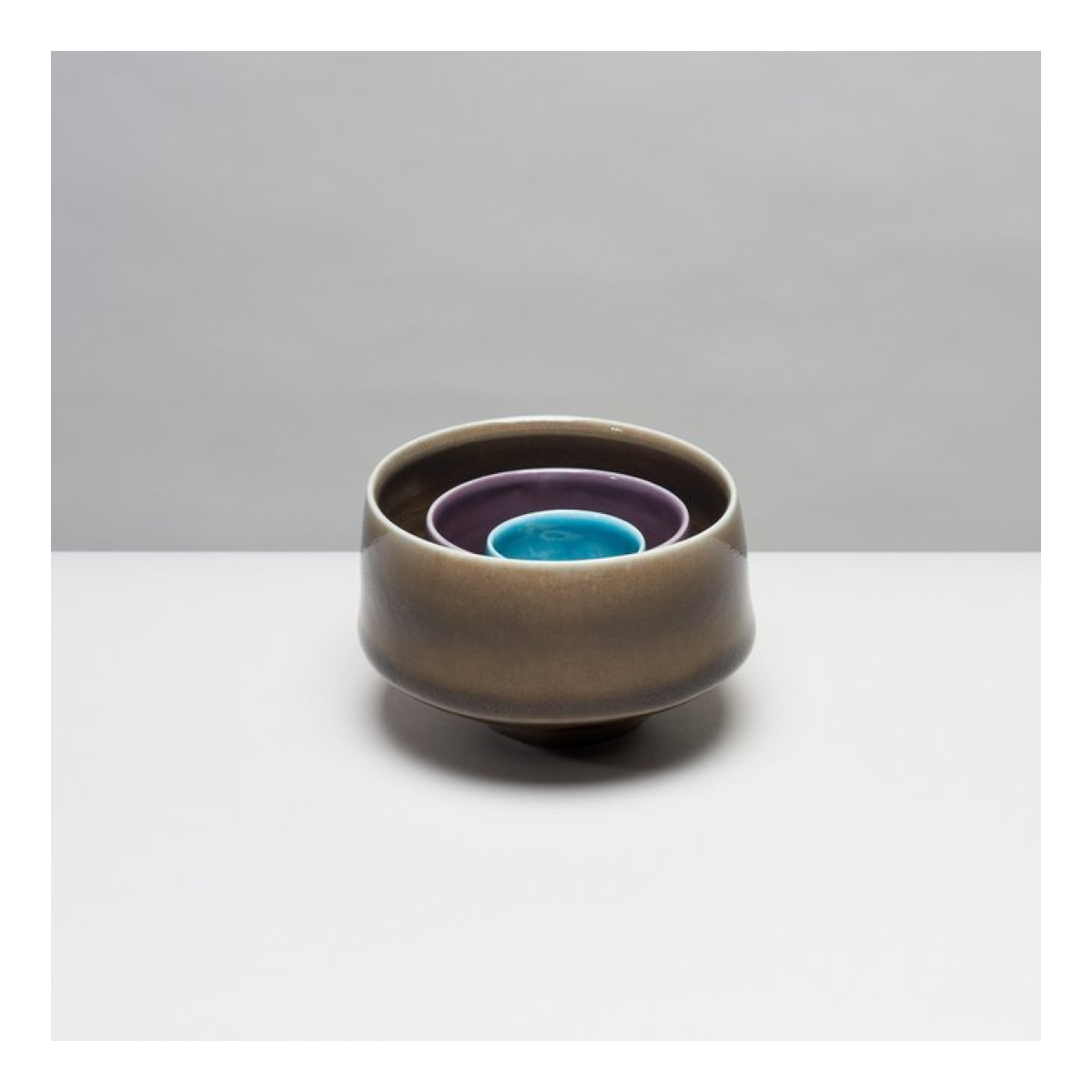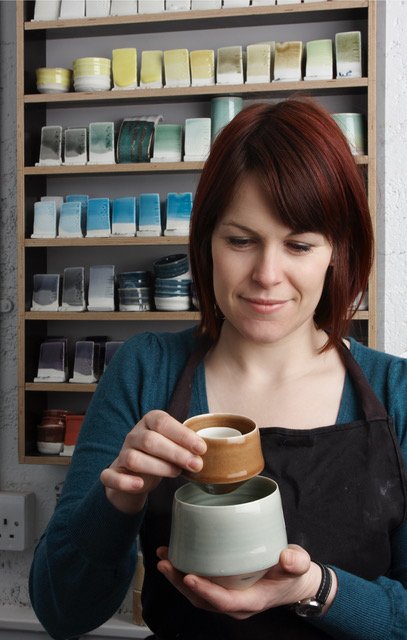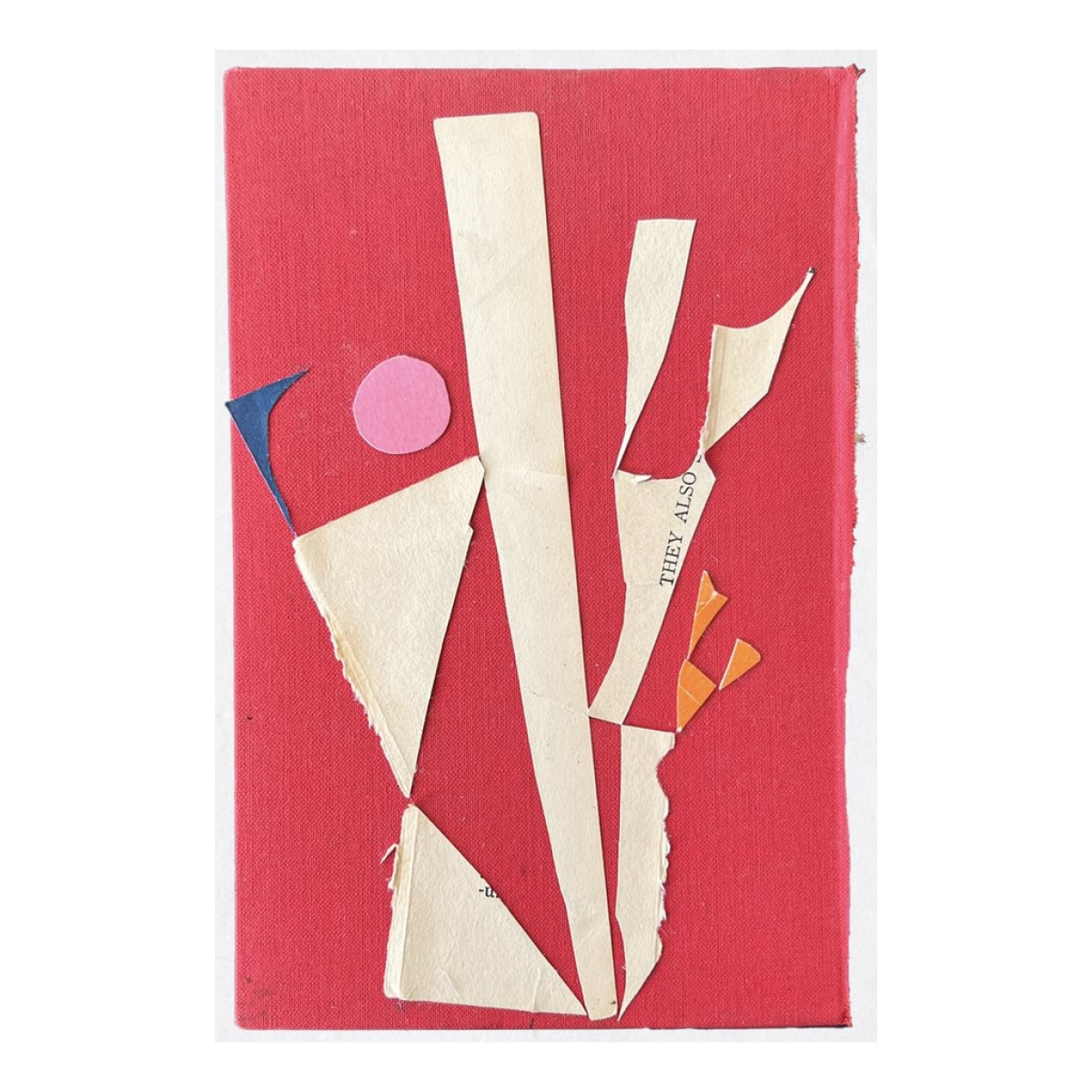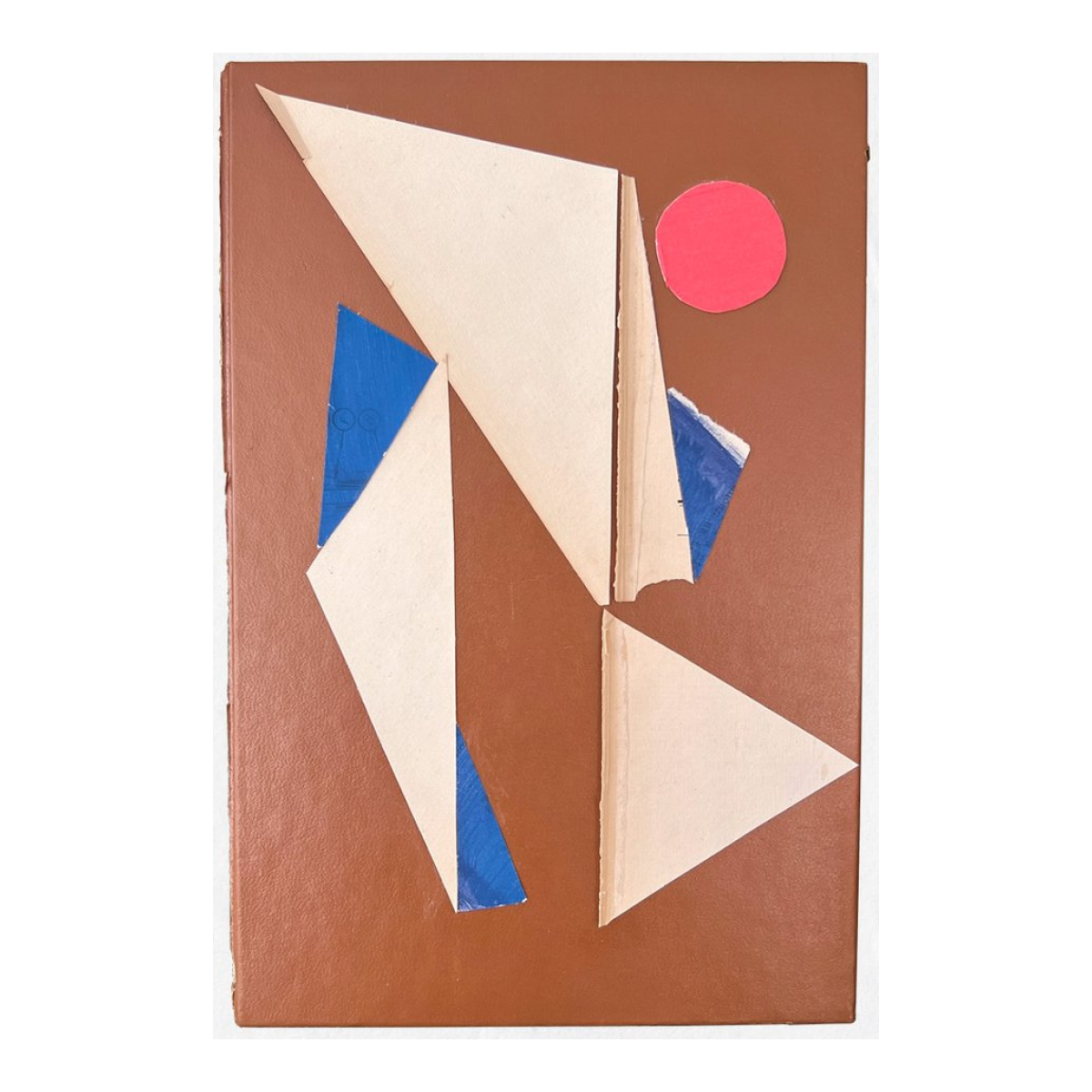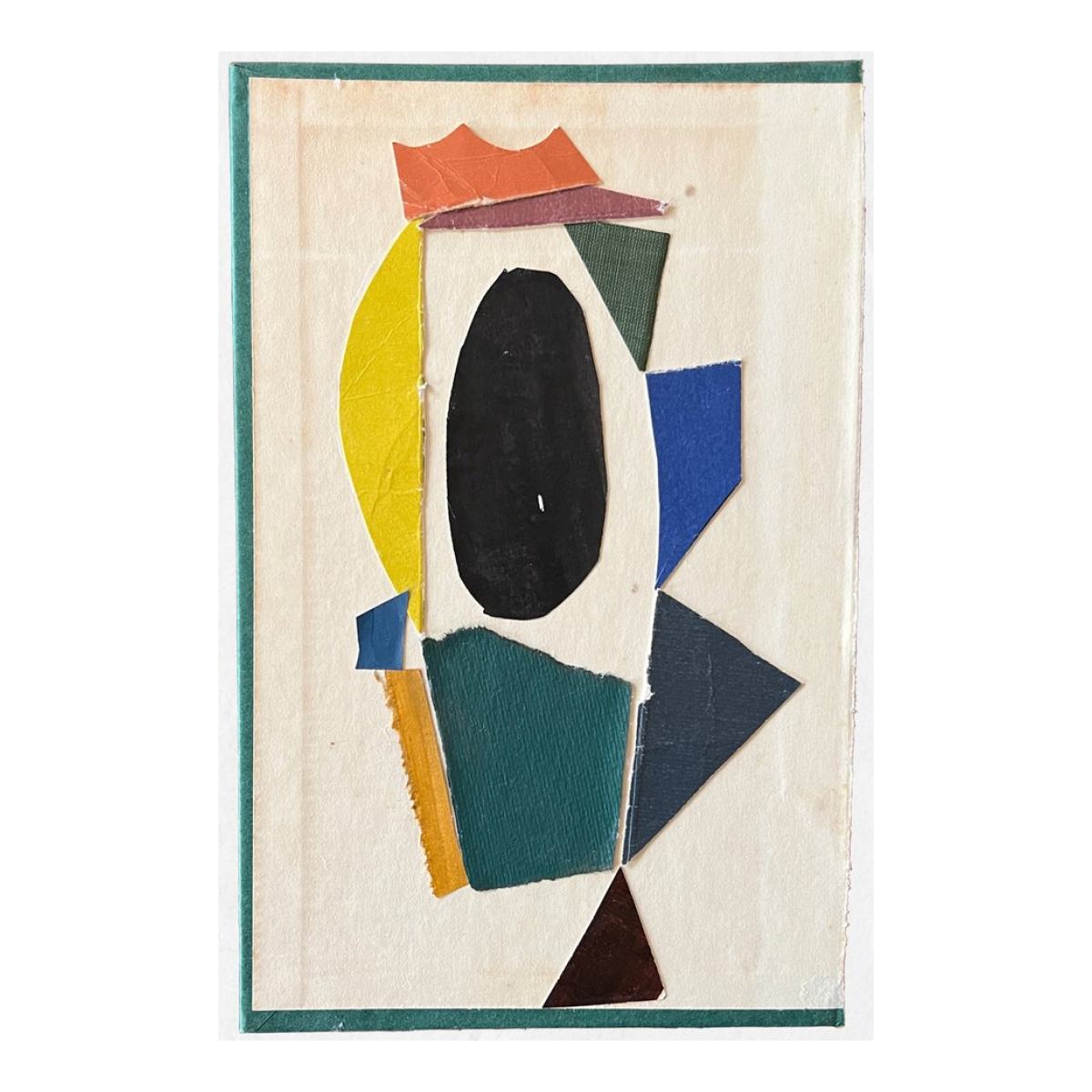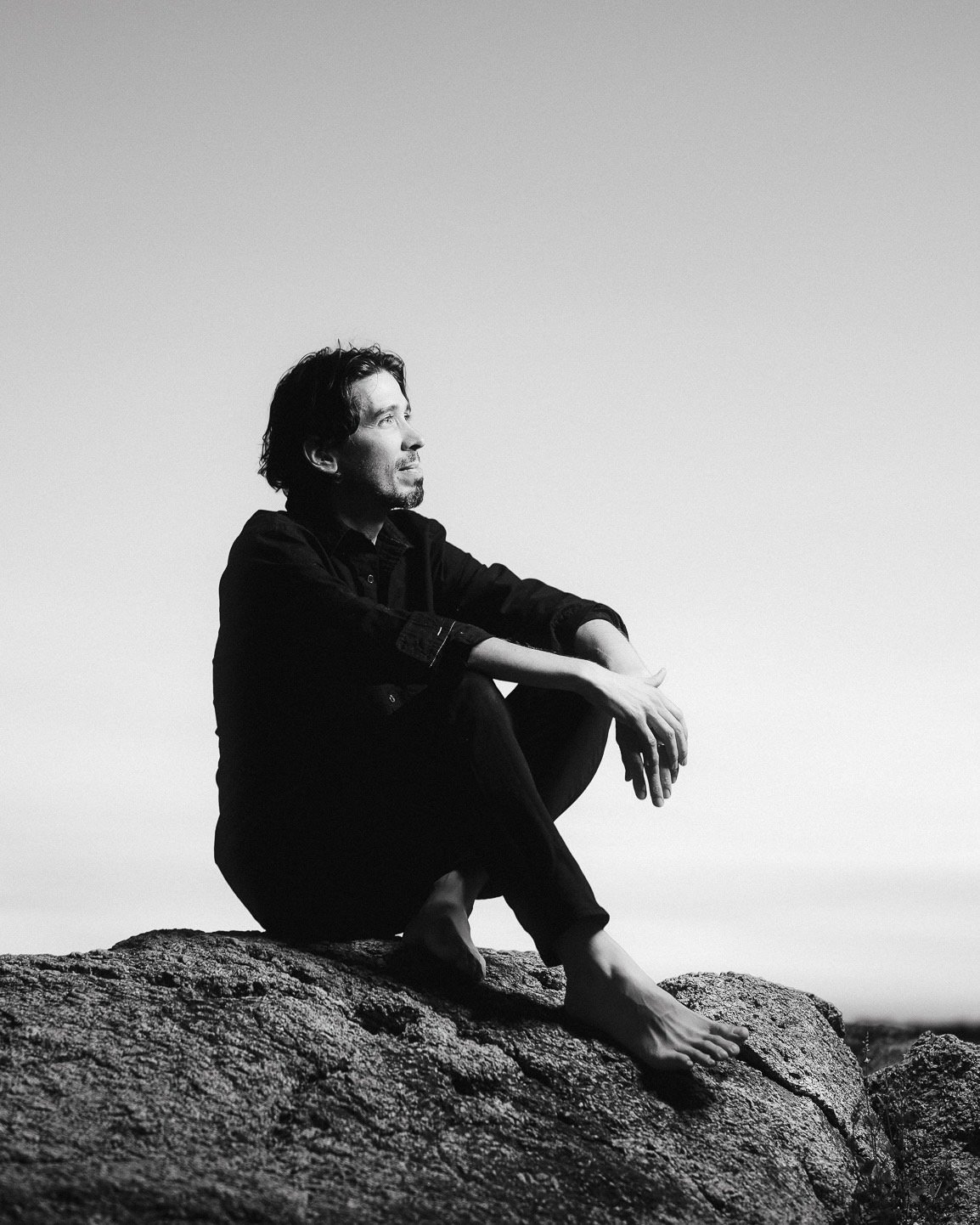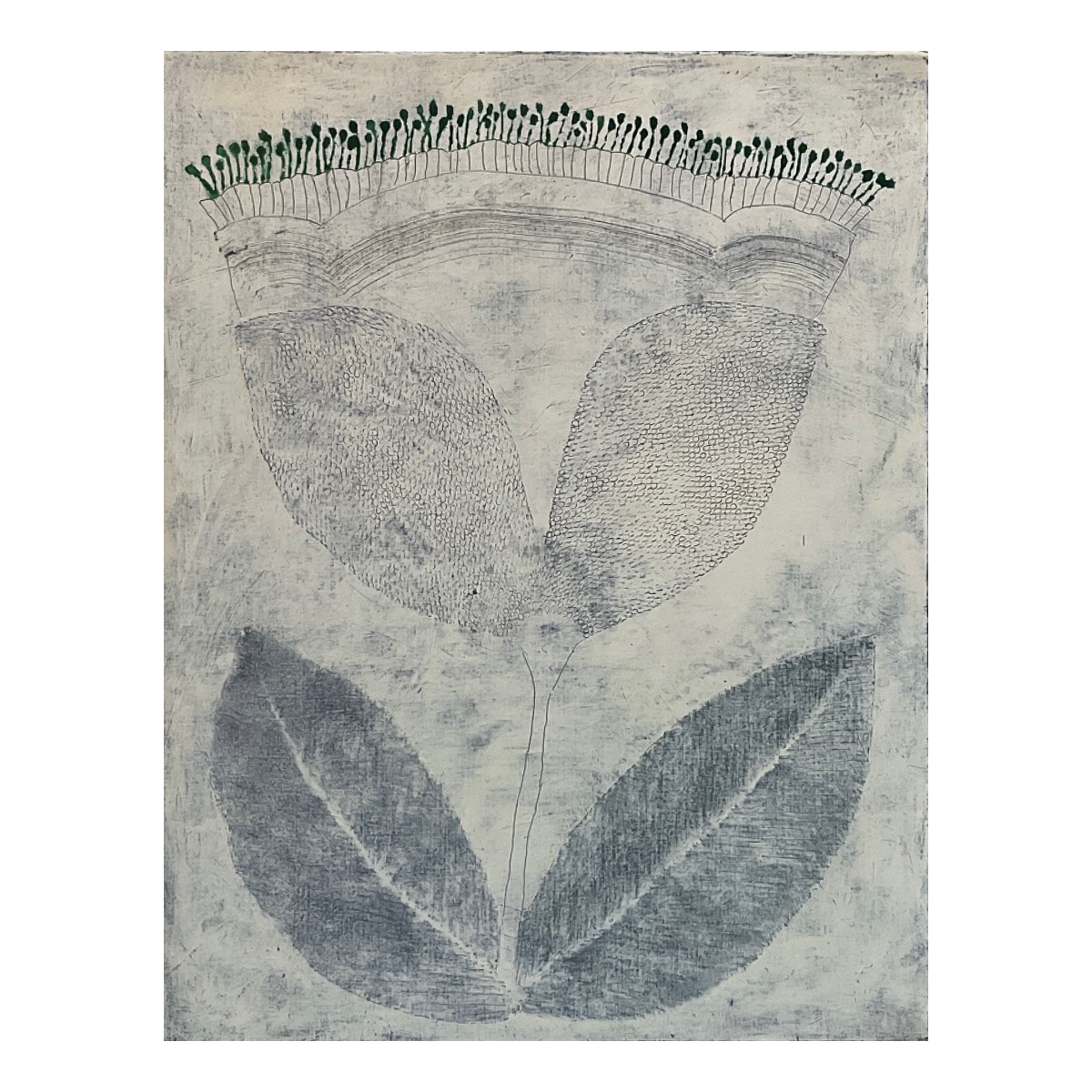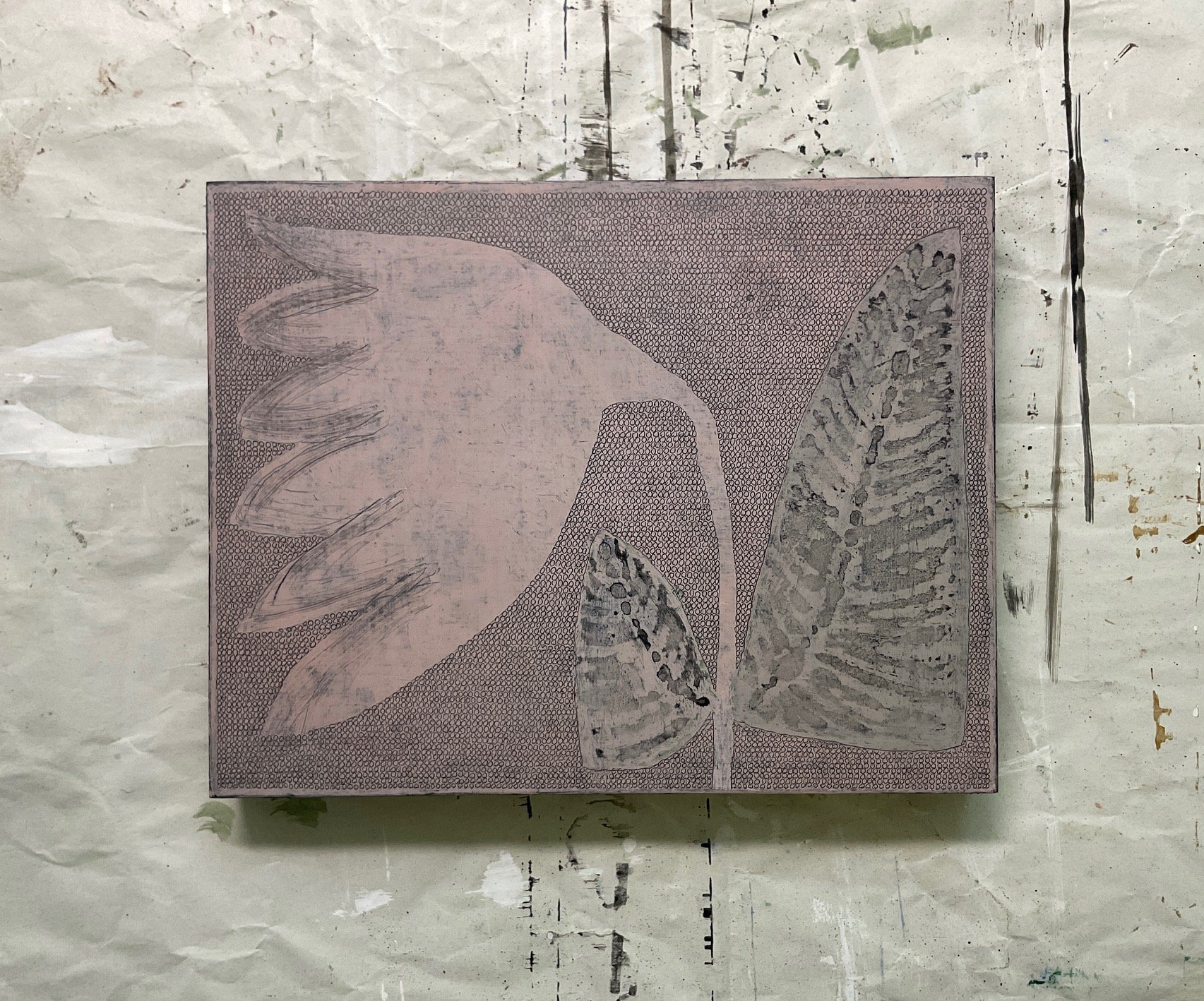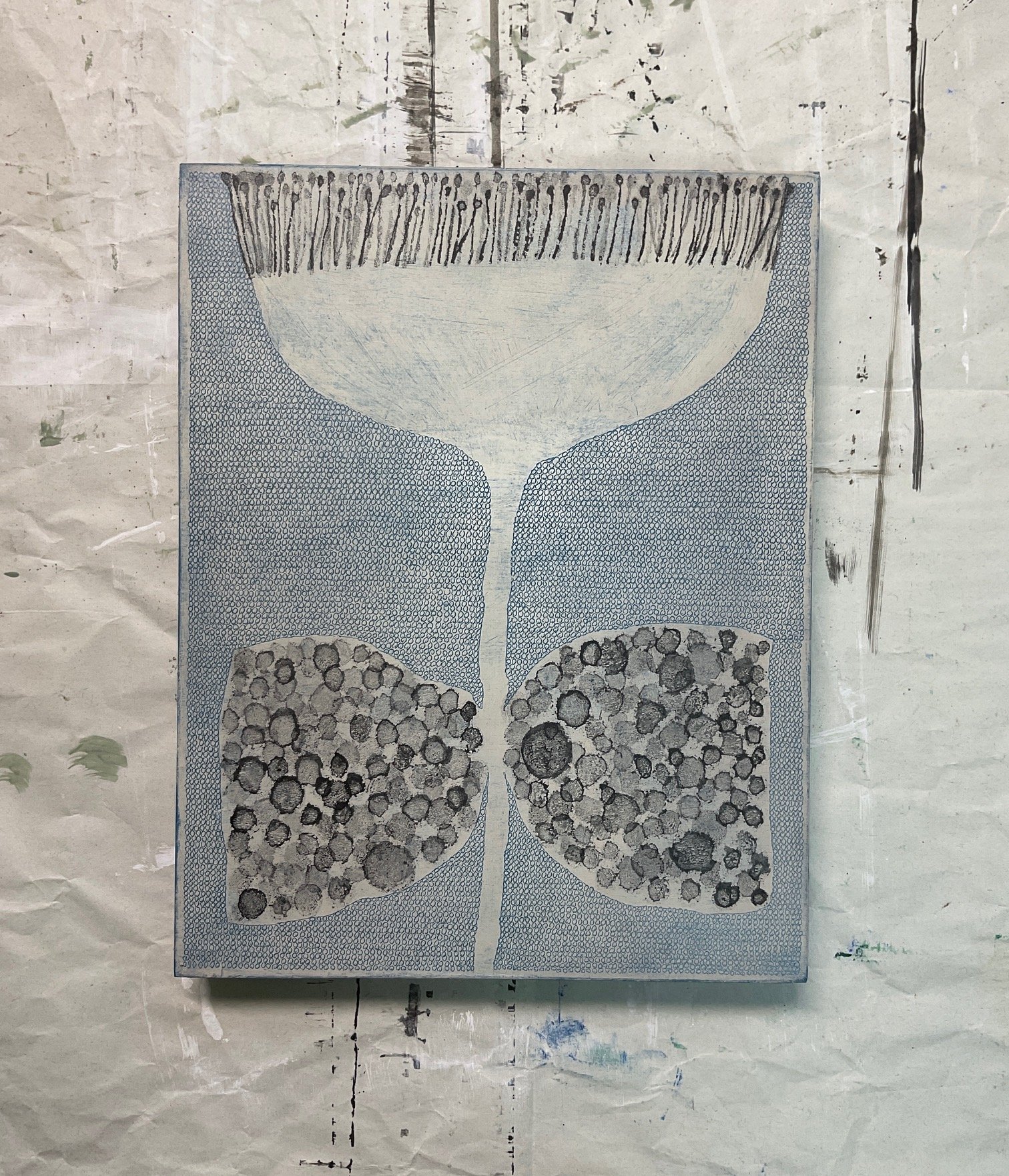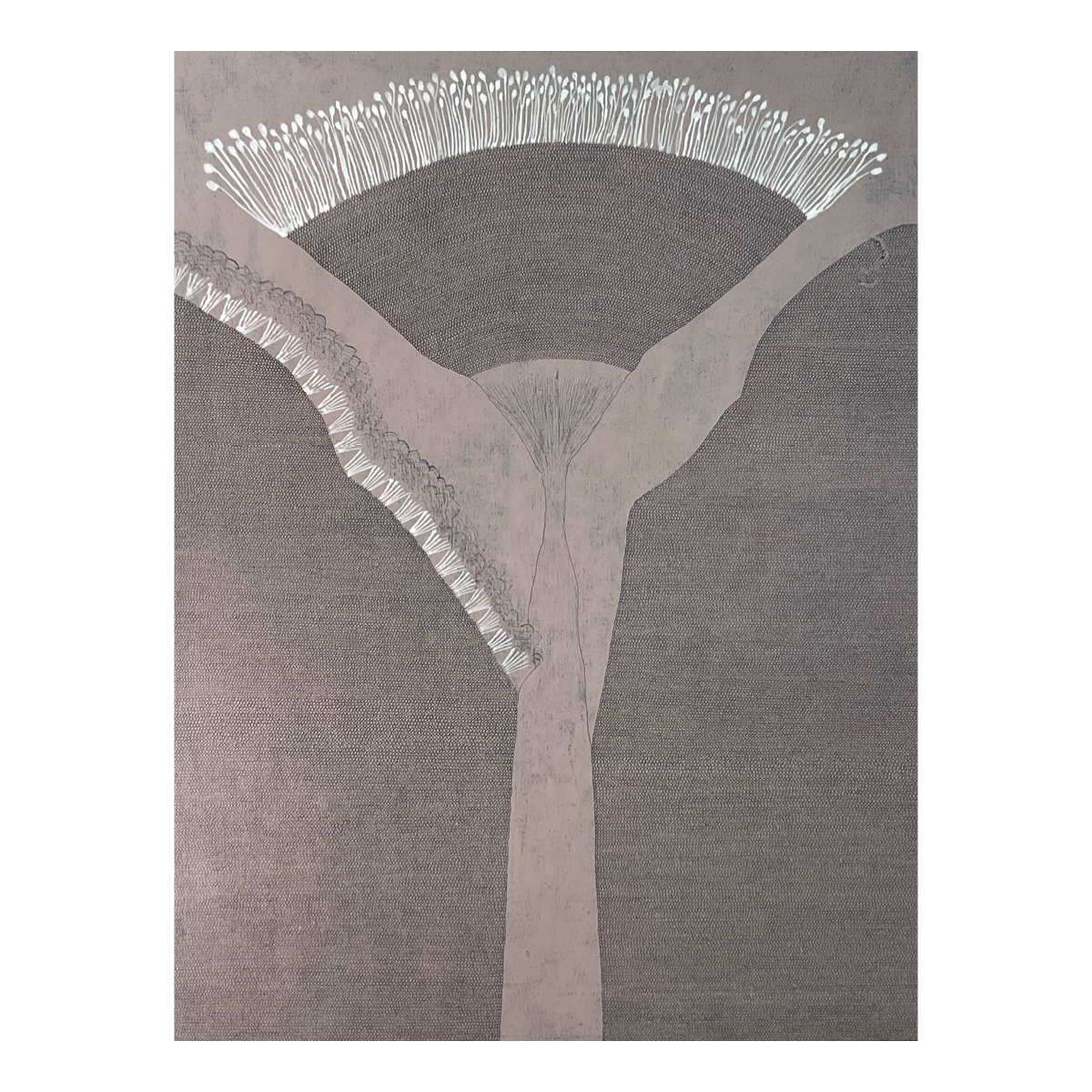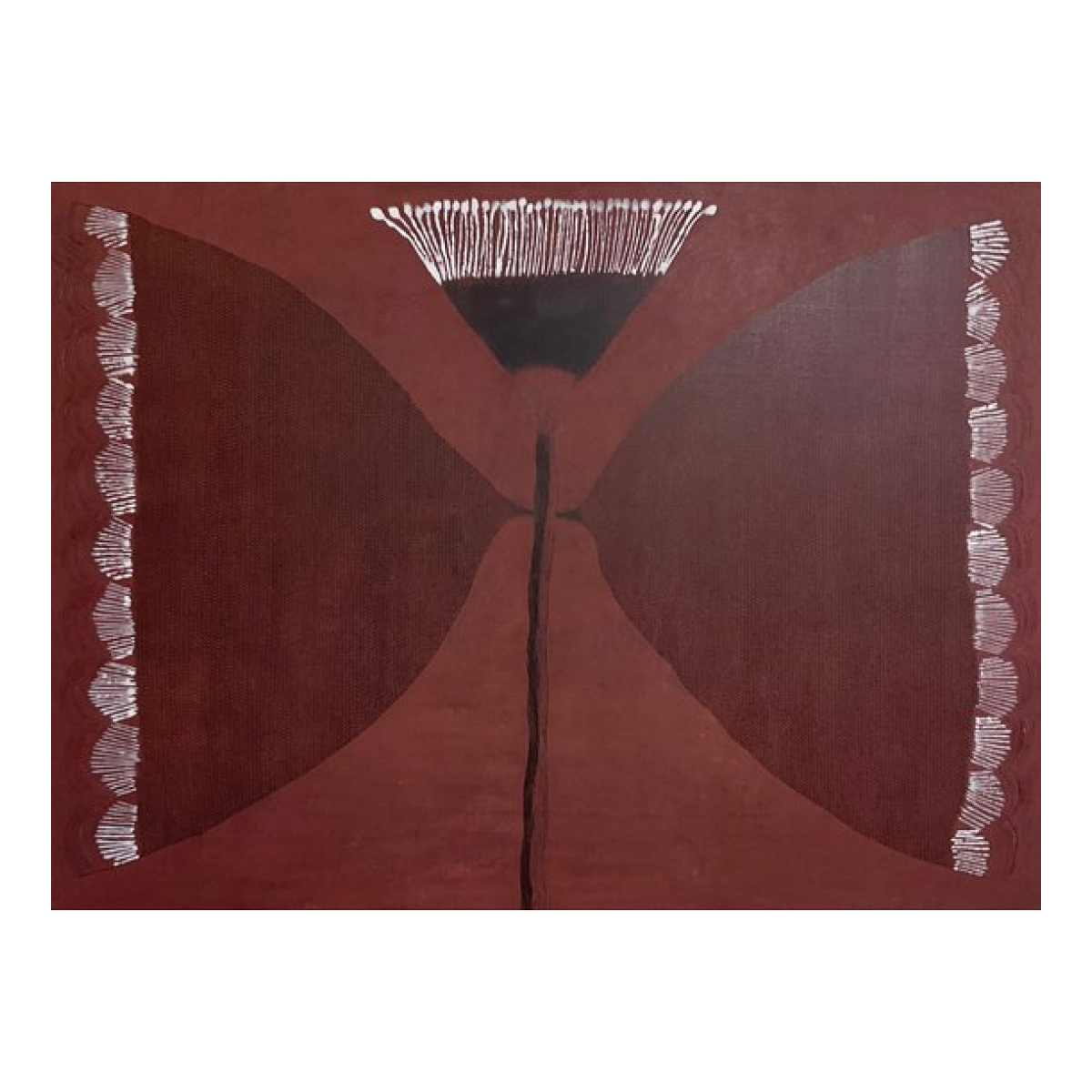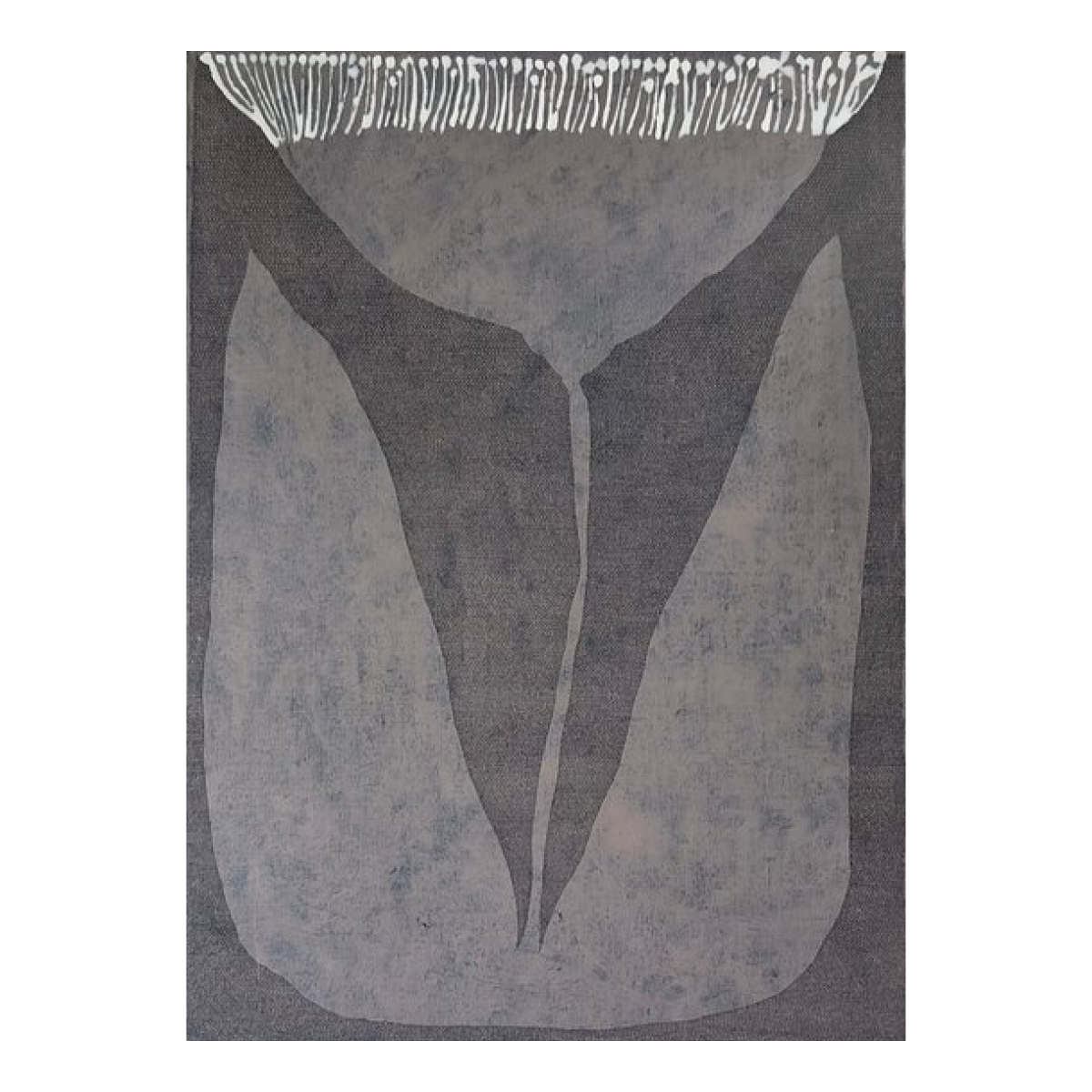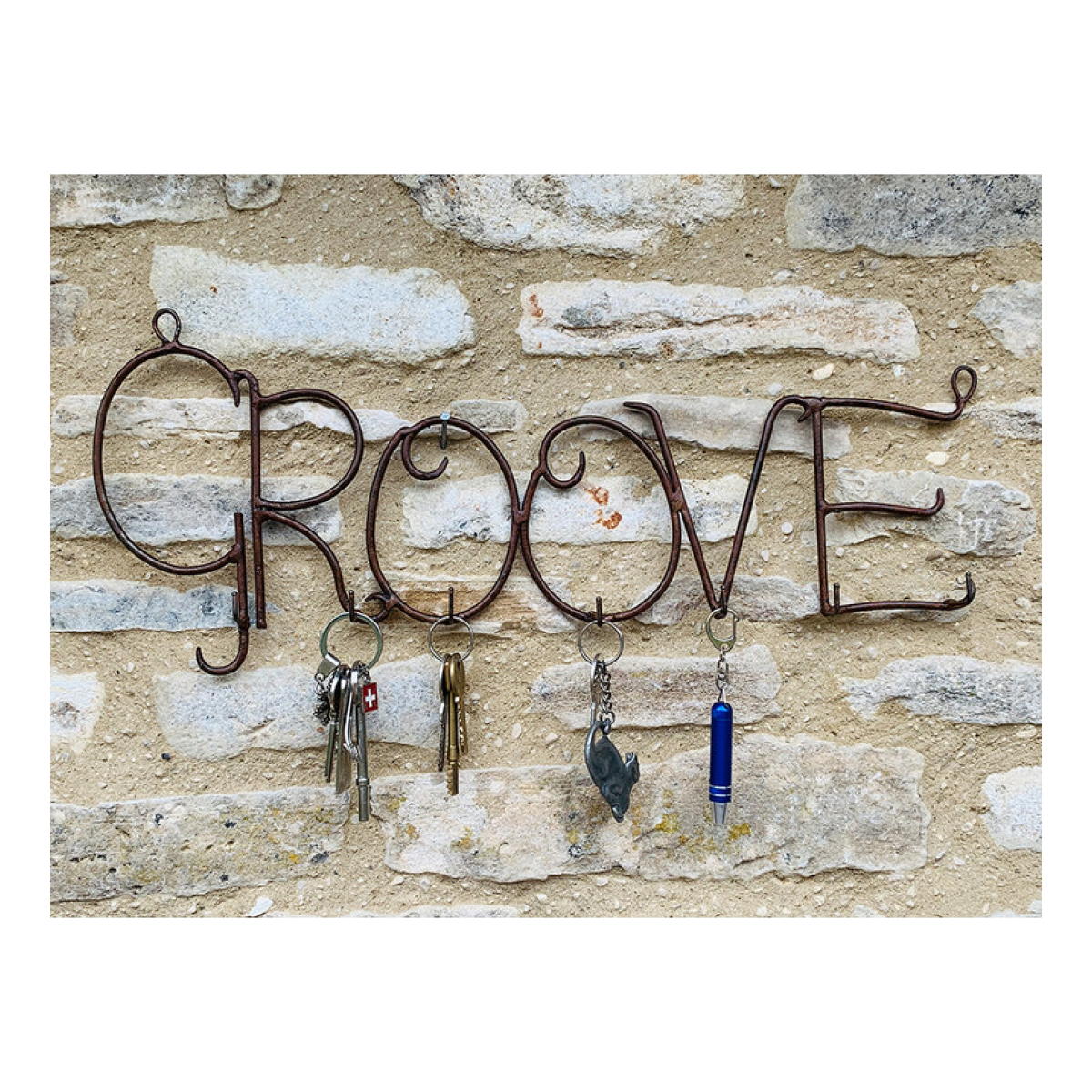ALICE SHEPPARD FIDLER
Photo: James Bedford Photography
INTRODUCTION
Alice Sheppard Fidler works with found spaces and materials, intervention, and action, to create sculpture, installation, performance, and works on paper. Her work is sited both in and out of the gallery. She often begins by identifying a zone of rigidity (a rule, a social code, or a hard physical surface), and then working into the space around it, rubbing up against everyday conventions until their obviousness disintegrates, toying with oppositions until their hard edges loosen.
Her installations are temporary re-stagings often assembled from modular elements that travel between contexts, searching for new narratives to unfold. By transforming spaces and materials with minimal adjustments and subtle gestures, and leaning into rules and limitations, her work invites us to experience oscillations between absurdity and poignance, pointlessness and tenderness. Her approach is often performative, critically repurposing skills from her previous career in set design and using objects to stand in for bodies or traces of human contact. She leverages the distance between the viewer and the art object to draw attention to loss of connection or contact, and deploys found materials, with their past life of damage and care, filled with unanswered and unanswerable questions, to open us up to the unknown.
ARTIST BIOGRAPHY
Alice Sheppard Fidler is a founding member of Studio Voltaire Gallery and Arts Charity and runs the artist-led initiative The Hide Artist Retreat. Before completing her MA in Fine Art at the University of the West of England in 2020 she worked in design for television, film, and fashion.
After her degree in textiles, 1989, Alice set up a design studio producing fabric designs for national and international clients such as Timney and Fowler and Laura Ashley. From there, she went on to design interiors with a special focus on painted finishes and murals. She designed for a range of high-end private clients and commercial spaces such as banks, night clubs, hospitals, and design businesses in the UK and abroad. In this period Alice was a founder member of the arts studios and gallery Studio Voltaire and had an active studio practice in design.
During one of her mural commissions, Alice was then head hunted to assist a client's designer in their TV and Film production company. This led to Alice freelancing with the lead role of art director in the art department for Clive Howard. They worked together on many TV commercials, including Audi and Lloyds Bank often directed by the renowned Douglas Brothers.
While developing her skills under Clive, Alice built her own network of clients and freelanced for several years for Nickelodeon designing sets for Children’s TV. She also designed sets for commercials, pop promos and short films.
After the financial crash in 2008, Alice pivoted her career away from moving image to working with photographers designing sets for fashion magazines. She worked regularly with musician Bryan Adams, a successful photographer, producing sets for A -list celebrities in Tatler and Harpers Bazaar. At this time Alice was championed by a fashion stylist who linked her up with Mary Howard, US based designer for photographer Annie Leibovitz. Through this, Alice became Leibovitz UK based art department and set designer working with her for M&S campaigns and editorial shoots for Vogue with Leibovitz famed celebrity subject matter.
In 2015 Alice and family moved from London to settle in the Cotswolds. It was here she was headhunted again, this time to work for Giffords Circus. She designed and directed photos shoots for their programmes for five years as well as coordinating external photo shoots with visiting photographers.
Having had a drawing practice to serve her varied commercial careers, and after many years using her creativity for other people’s projects, Alice decided to return to ‘art school’ in 2018 to focus on developing her own critical voice. She developed a practice in which she transforms the tools of commercial visual production into tools for critical exploration.
She concluded her Fine Art MA at the University of the West of England in 2020 with distinction despite the pandemic and is currently establishing a successful career as a fine artist producing sculpture, installation and works on paper.
She is currently a recipient of the Gilbert Bayes Award from the Royal Society of Sculptors and the CAS Emerging Sculptor Development Award, and is a Spike Island Associate.
Recent projects and exhibitions include: RWA Open, Bristol, 2023, Mother Art Prize finalist, London, 2023, Imagining the fluidity of Permanence, solo show, Casa Regis, Italy 2022, two-person site-specific exhibition leave / stay / arrive with artist Rebecca Stapleford, Three Storeys, Nailsworth 2021.
She attended residencies at PADA Studios Portugal in 2023 and at Casa Regis Italy, 2022, and received a commission from Bricks, Bristol in 2020 to develop new work.
MARIA BALDA
INTRODUCTION
“My curious soul has led me to explore new forms, always using clays of various colors and textures to bring diversity to my collections.
Inspired by Brutalist architecture and the Japanese technique Kurinuki, I continue to create pieces for my BRUTALIST collection. Creating pieces in a wide range of sizes, from small cups to large bowls and lamps.
In my new collection, Imperfect Geometry, I play with (imperfect) straight lines, creating fruit bowls and vases. Each piece is unique and entirely handmade.”
ARTIST BIOGRAPHY
Maria Sejas Balda was born in Argentina in 1965. She is a graphic designer currently living and working in Ibiza, Spain.
A few years ago she discovered in the ceramic a new media to express her creativity, exploring different clays and techniques. She makes unique and limited edition stonewear pieces that are slowly hand-built or wheel thrown. Inspired by the organic form of nature and the wabi sabi philosophy.
Some of her pieces are raw, primitive, and austere, whilst others are inspired by architectural references, art, or design. All reflect the different facets of her personality.
“Perfection has no relevance for me and each piece has its individual character.”
ALICE ANDREA EWING
ARTIST BIOGRAPHY
Alice Andrea Ewing is a sculptor based in Suffolk, UK, and founder of the studio Pomarius. Her work explores place, ecological value, and embodiment, with a focus on the Renaissance Investment Casting process, adapting the Lost Wax technique to bronze. Ewing's Pomarius studio creates site-specific sculptures from organic specimens, casting them in bronze to highlight their inherent value.
She collaborated with Loewe in 2021 and is currently working with English Heritage and Wildland Estate. Her past clients include The Newt, Heckfield Place, and private commissions for Roux Waterside Inn and Gerbou. Ewing's work has been exhibited at venues like Soho Farmhouse, Kew Gardens, and the London Art Fair, and is part of private collections, including the Loewe Foundation.
Awards include the A-N Time Space Money Bursary Award (2020), BASET Endeavour Award (2019), and the Hill End AIR in Australia. Her work has been featured in CRAFT, The World of Interiors, The Telegraph, and Financial Times HTSI (2022).
Ewing runs the Portable Foundry Project, a participatory sculpture program, and has been involved in community initiatives like Jetty Lane C.I.C. and Contaɪnər Projects. She continues to lead the 'Curious Minds' pilot project, promoting mental health and well-being through art.
EDMUND SUMNER
INTRODUCTION
Edmund has been shooting architecture and interiors worldwide for over 20 years. In that time his personal work has always been running in the background. The following are a selection from that period.
Images are sold as limited editions with numbered certificates of authenticity.
ARTIST BIOGRAPHY
Edmund is a highly regarded London based architectural photographer who has been collaborating with leading architects, publishers, editors and curators globally since 1998. Edmund shoots for architects Interior designers , design agencies developers contractors and engineers
In addition to his domestic photography, Edmund travels far and wide, equally comfortable working with emerging talent and mega studios globally. He is often to be found shooting in India, Japan, Mexico, the Middle East and the USA
Publications include: Architecture of Eden (Transworld 2004), New Architecture in Japan (Merrell, 2010), Architecture of the Olympics (Wiley, 2012) and Indian House (Thames and Hudson 2020). Recent clients Include: Tadao Ando, RSHP, RIBA, Burberry and the National Government of Kuwait.
ÉRIC HIBELOT
INTRODUCTION
“I’ve created those little bottles as many characters, trying to give to each of them its own personality. They are all unique. The decoration evoking the way those characters could be dressed while the shape I gave them provide them with mankind. It’s up to you now to adopt them, to free your imagination and to invent their own story, the best way to make them your own!”
ARTIST BIOGRAPHY
Eric Hibelot is a French ceramicist who works with white porcelain sheets. He draws inspiration from everyday objects such as jerry cans, oil canisters, and milk cartons, taking their iconic form into the fine art realm.
His shapes have soft edges that satisfyingly sit in the hand, and his vases and cups have gently “rounded bottoms” reminiscent of Culbuto toys. Hibelot’s crisp white porcelain forms are stained with swathes of primary colours, and simple, distinctive patterns drawn from elementary textile designs.
FABIENNE JOUVIN
ARTIST BIOGRAPHY
Fabienne Jouvin is a cloisonne artist based between Paris and Provence. Her inspirations come from travels that span Tokyo to Havana, the streets of Paris to the sea beds of the Maldives. She sketches her inspirations both real and imagined, and works with artisans from the border of Mongolia to the workshops of Limoges, Provence, and Paris, to create her multi-disciplinary pieces.
Her work was first exhibited by The Fashion Foundation in Tokyo, and by Frederic De Luca of the Gallery en Attendant Les Barbares in Paris. In 2008, Fabienne lectured at the Arts of Fashion Foundation of San Francisco, to pass on her experience to young designers studying all over the world.
‘I like to play with anachronisms and correspondences, to match colour patches and precision of the observation, to mix austerity and humour, rigour, and spontaneity.’
FLOC
ARTIST BIOGRAPHY
FLOC is a Kenyan based creative business that unites modern design, artisan culture and ethical welfare. It was founded by Australian designer Nina Howard, who worked for many years as a design and market consultant for organisations including UNESCO, Traidcraft and AUSAid.
FLOC is an antidote to industrial production, working alongside established community cooperatives to create engaging handmade mobiles that combine imagination and elegance. They are uncompromising on ethics, guaranteeing artisans 50% of gross profits from every item.
FLOC use trusted, locally-sourced natural and recycled materials, and work with two cooperatives in particular; SMOLART Self Help Group, a member of the World Fair Trade Organisation ,and the Victorious Crafts Group - an artistic solution to the ingrained problem of youth unemployment in the Kibera slum, Nairobi. Victorious transform waste materials found in their neighbourhood, such as wood and brass, bone and horn from the meat industry, and handcraft them into striking products including jewellery, bowls and cutlery. They couple waste management with environmental sustainability, human dignity, and creative achievement.
JAMES BEDFORD
ARTIST BIOGRAPHY
James Bedford grew up in London trying various after school jobs, but it was photo assisting that seemed the most fun. He worked for various photography greats including Rory Carnegie, Hugo Burnand and for a short spell Lord Snowdon. He went on to work for 2 years firstly as an assistant on the newly founded Wallpaper magazine under its founder Tyler Brûlée, looking after the Canadian and US photographers working in the UK. He quickly went on to shoot travel and still life for the magazine. James went on to photograph for Conde Nast Traveller, commissioned by significant travel editors including the legendary Yolanda Edwards. He continues to shoot for most of the Conde Nast international editions as a contributing photographer.
For the past 15 years he has worked as a freelance photographer specialising in Hotels, Food and Travel with assignments taking him on many adventurous trips including mule trekking, long distance train journeys, kayaking expeditions, and camping in far flung places under the clearest of night skies. His work includes photographic projects for The Dorchester, The Telegraph, The River Café, Harper’s Bazaar, The Lonely Planet, House and Garden UK, and Vanity Fair.
James now lives in the Stroud Valleys with his wife Catherine, Founder of Dashel bike helmets, 2 kids, and a couple of rescue mutts. He is partial to the odd pub quiz, and does occasionally like to put his feet up.
KIM DONALDSON
ARTIST BIOGRAPHY
Kim Donaldson is a British ceramist based near the Georgian city of Bath. Her inspirations come from uncontrived compositions of everyday life. Arrangements of colours and textures that find themselves within a frame and catch her eye: fallen leaves by a rusted pipe, flowing patterns through streams of water, a bird sitting amongst sun dappled branches, and nature’s debris lying by everyday, unobserved manmade objects. She translates these observations into spontaneous, uplifting, and gentle patterns that are painted, stencilled or scratched into her hand built ceramics.
She began her studies with an Art Foundation at West Surrey College of Art and Design in 1973, and went on to refine her particular interest with a Ceramics BA, at Bath Academy of Art from 1974-1977.
LLAEL MCDONALD
INTRODUCTION
“In my series of 'Broken Egg' paintings, I draw inspiration from the tradition of Dutch Masters while exploring the symbolism and historical significance of the humble egg. Rooted in the techniques of the Dutch masters still life, I aim to capture light and shadow of the period while infusing a contemporary perspective into the genre.
Through these 'Broken Egg' paintings, I invite viewers to delve into the layers of symbolism and meaning embedded in both the subject matter and the artistic process. By bridging classical techniques with a contemporary narrative, I aim to contribute to the ongoing dialogue between tradition and innovation, offering enduring themes of life, light, and the delicate balance between creation and decay.”
- Llael McDonald
ARTIST BIOGRAPHY
Llael McDonald's work is moody and nostalgic. with underlying narratives that change from viewer to viewer. Delving into the familiar and bringing forward the ordinary to be presented to an audience with emotional and visual elevation.
Llael aims to ignite conversations about our collective history, the diversity of culinary traditions, and the integral role of food in shaping contemporary society. Her work serves as a visual feast for the eyes, stimulating the viewer's senses and intellect. It prompts us to recognise and appreciate the intricate tapestry of influences that have contributed to the development of civilisation, urging us to celebrate the power of food as a unifying force and a testament to our shared human experience.
HISTORY
Llael McDonald grew up in the inner-city Melbourne suburb of Spotswood and showed and early propensity toward the visual arts, particularly painting, which set her on the path as a professional artist at a young age. In her tertiary years Llael attended ICAD (independent college of Art and Design) situated in the creative and high energy hub of Chapel Street Melbourne. She studied painting under artist Terri Matassonni and graduated with one of the top portfolios in 1996.
SELECTED EXHIBITIONS
101 Collins in the CBD of Melbourne (1995)
The ICAD Galleries in Prahran, Melbourne (1993 to 1996)
The Cherry Tree Restaurant in Prahran, Melbourne (1996)
Pantechnicon Gallery in Daylesford in Joint exhibitions (2003)
The Melbourne Art Fair (2004)
Pantechnicon gallery “Studies in Light, solo show. (2005)
Pivotal Galleries in Richmond (2004 to 2005)
The Substation Newport (2007-2009)
Solo Show Arthouse Ink Gallery (2011)
Group Exhibition Arthouse Ink Galleries, Yarraville (2011)
Blue Raincoat Spotswood (2012)
The Black Dog Footscray (2012)
Fawn Gallery Collingwood (2013)
Solo Show, Catherine Abel Galleries (2014)
Solo Show, Cosmopolitan Trentham (2015)
Solo show, Cosmopolitan Hotel Trentham (2019)
The Banquet, group exhibition Weswall Gallery, Tamworth NSW 2021
Sydney Affordable Art Fair 2022
Melbourne Affordable Art Fair 2022
Micheal Read Sydney and Le Cornue Australia exhibition 2022
Solo show “Sumptuous” Sketch Co Gallery 2023
Sydney affordable art Fair 2023
Solo show, “Plenty” Sketch Co gallery 2023
CurrentLittle Gallery Trentham, Victoria
Michael Reid Norther Beaches, Sydney
Michael Reid Southern Highlands NSW
The Toowoomba Gallery, QLD
Han Feng art Space New York, New York
Compendium Gallery, Melbourne
Art to Art Gallery, Melbourne
Among the Pines Galley, UK
AWARDS
Finalist in the Lethbridge Small Scale Art Prize 2014
Finalist in Bluethumb Art Prize 2017
Highly Commended Trentham Easter Art Show 2017 and 2019
Finalist in the Lethbridge Scale Art Prize 2022
Winner of the Curators Still life prize Tacit Gallery Melbourne 2022
Winner of the Peoples Choice award Still life art prize Tacit Gallery 2023
Finalist in National Emerging Art Prize 2023
LOUISA TAYLOR
ARTIST BIOGRAPHY
Louisa Taylor gained a BA (hons) degree in Ceramics, at Bath Spa University, followed by a master’s degree from the Royal College of Art, London. Examples of her work are held in private and public collections in the UK, and she has received numerous design awards and accolades.
Alongside her practice, Louisa lectures on ceramics for the BA (Hons) 3D Design and Craft degree course at the University of Brighton and is the author of three books: Ceramics Bible, Ceramics Masterclass and Glazes for the Contemporary Maker. She is based in Brighton, UK.
NATHAN ISAAC
ARTIST BIOGRAPHY
Nathan Isaac is an artist and designer based in Newport, Rhode Island. His storied, mid-century imbued collages present stirring imagery of the invisible and imagined with a connective energy. Experienced by many viewers as emotive and musical in tone and 20th-century in voice, the works are often based in memory and identity journeys, liminal and universal in theme.
Color and contrast feature boldly in primal, geometric, and organic forms. A mien of modern sculpture accentuates particular compositions along with elements of constructivism, cubism and a range of abstraction.
‘My imageries aim to evoke. Through a varied and intuitive process, I connect resonance and reminiscence.’
Periods of tutoring and formal study in art and music inform his practice, along with autodidactic methods. While working visually, Nathan experiences artistic resonance in a manner similar to when he is composing music or poetry.
‘With sound being visual for me, I find visual imagery to also be very aural.’
Each piece is expressively constructed from vintage and sustainably sourced materials, pigment-based inks, and natural adhesive. His work appears in private collections internationally, luxe interior designs, and is currently showing in galleries and design shops in the US and UK.
SATOKO INADA
ARTIST BIOGRAPHY
I am Satoko Inada. I was born in 1973. I have been painting abstracts since 2000. After getting married and having a baby, creating my works while rearing them. Around 2017, I started working with flowers as a motif and continues to do so today. I have exhibited my works mainly in solo shows in Japan.
My motivation for my work is dialogue with my children. It is natural, but I believe that people are not always beautiful, that they live with unexpressed feelings, sometimes painful, sometimes sad, sometimes unpleasant, and sometimes unknown. I draw a flower that blooms in my heart as if to pray "please, please..." for the present and for what lies just a little bit ahead. In this way, I am repeatedly embracing, protecting, nurturing, warming, and waiting.
SUE FUSCO
ARTIST BIOGRAPHY
Sue Fusco is originally from Canada where she studied jewellery making. She moved to Kenya with her young daughter about 30 years ago, and immediately had to harness her design skills and put them to use on a much grander scale, as she arrived with very few personal belongings. With a welder and scrap metal off cuts she set about creating furniture and interior objects for her home. Friends and visitors couldn’t get enough of her designs asking for similar objects to fill their homes too, so she quickly found a creative livelihood that has supported her ever since.
Sue designs a large range of wrought iron furniture and other useful, beautiful household items, as well as jewellery and clothing collections. She uses new, found and recycled items, scrap metal and second-hand cloth, creating desirable and dynamic items from thrift. She usually sells out at East African fairs, and is regularly commissioned to create interiors for private houses and safari lodges throughout the region. Sue has always worked with a small team of “fundis” (the Swahili term for artisans and tradesman), who now do the hard work of realising her designs.
WILLIAM BALTHAZAR ROSE
INTRODUCTION
“As a boy I remember feeling a huge mysterious appreciation upon seeing a fully uniformed cook for the first time. The cook appeared dignified and superior like a king or a magician compared to the banal figures around him. The white costume seemed to glow amongst the drab members of the room, and there was a sense of ceremony and importance to his gait. The first cook, whom I remember as rakish and proud, was holding a cleaver and a silver tray, commanding attention.”
I began painting the series I call the ‘Cooks’ in 1991 and have continued to add to it since that time. Since childhood I have been fascinated with the spirit of cookery and in particular the chef; the figure that is so often dressed in white and has a tall hat and checkered trousers. I have always loved the costume of the cook—it seems magical and theatrical, and suggests at times the robes of a priest. I have been intrigued by what the cook does as a creative individual and am aware of how often the cook creates more vastly than any other figure in the arts.
I am still filled with tremendous awe when I glimpse a chef, and grow slightly wobbly at the knees. I think cooks serve and that they are almost like medicine men. They can be manic in the kitchen; overworked and pressured, producing wonderful food but suffering to do it. There is a discrepancy between the nirvana they bring forth in the dining room and the tense world in the kitchen-- there seem to be two worlds each masking the other. My paintings have been an attempt to speak of this world which is to some degree my evoked fantasy of a world I do not know in its depths, but rather guess at.”
THE TENNIS PLAYERS COLLECTION
ʻThe series of Tennis Players stem from my childhood as Tennis was one of the few sports I was able to play or understand.
The first tennis player I ever painted was in fact a portrait of my brother Inigo. He wore a very particular hat which my aunt had purchased for him in Venice. It was a straw hat of a bright yellow and had been blown into a canal and had gotten thoroughly wet. He had been forced to dry it on his finger as he walked home. It had acquired a rather unique shape due to it’s reformation upon his finger. He wore the hat for our tennis lessons. It was a little oriental in feeling.
Tennis is a game of the court with fixed boundaries played mostly between two people. A little like marriage when it has gone wrong or like boxing, it is about opposition and victory, keeping a cool head and fighting it out. Both light-hearted and cruel depending upon one’s outlook. It inevitably reveals the duality of victor and loser.
The tennis players also have unusual hats and costumes which derive from the fanciful and elevated social status of the game.
Another aspect of the series is the racquet which often seems to suggest a hand mirror. This suggestion initiates an alteration of the narrative. The racquet held up as a mirror used to gaze into by the player or to reflect the viewer. A place of introspection and contemplation which is part of the traditional role of painting.
The humour of these paintings is in the delight of the human condition when at a game of Tennis. Though there is opposition (as in war) the opposition is so much more about revealing technique, mastery and spectacular gamesmanship. The players themselves become entranced with the wonder of the event almost like lovers thrilled with their own sexual sophistication as they fight for dominance.’
— William Balthazar Rose
View the William Balthazar Rose 2023 catalogue.
ARTIST BIOGRAPHY
William Balthazar Rose was born in 1961 in England. He studied at the University of California, Berkeley, and Princeton University. The history of art is visible in his work with noted influences being Goya, Bruegel, and Morandi.
Rose paints landscapes, still life, and symbolic figurative work, but is perhaps best known for his Cook Series. He says of the cooks “The tall white hats are architectural, turning the human figure into something stone-like and eternal. The chequered trousers are playful and decorative, and the knives symbolic and threatening, full of innuendo and taboo.” Acclaimed chef Michel Roux Jr is a friend and collector of his work, as well as inspiring many of these paintings.
Rose has lived for several years in the Georgian city of Bath and maintains residences in Tuscany and Umbria, where he is also represented. He has exhibited widely in the United States, England and Europe.


